- Home
- ~ Camino Primitivo (The Original Way)
- Oviedo Spain
Jump to Camino Primitivo Stages
Oviedo, Spain
~ The Historic Start of the Camino Primitivo
The historic city of Oviedo, Spain deserves a day or more of exploration, prior to your pilgrimage to Santiago de Compostela on the Camino Primitivo or the end of your Camino de San Salvador. My only regret when I traveled here was that I didn't spend sufficient time soaking in all Oviedo has to offer.
"Quien va a Santiago y no al Salvador, visita al lacayo y no al Señor." ("He who goes to Santiago and not to San Salvador [the Cathedral in Oviedo], visits the servant and not the Lord.") ~ Author Unknown
This well-known saying about the San Salvador cathedral, is certainly indicative of the holy relics that reside within its hallowed grounds.
I believe that King Alfonso II, the "Chaste" in his grand design of the pilgrimage to Santiago de Compostela in the 9th century, surely must have envisioned the cathedral in Oviedo, at the start of the Camino de Santiago, to be the ultimate Christian destination. It was, after all, the new capital of his kingdom of Asturias.
According to the history of the Camino Primitivo, Oviedo was the starting point of the pilgrimage to Santiago for centuries, long before the other routes became established and the Camino Francés became the more popular route.
The occupation of Asturias by the Moors in the 11th and 12th centuries hindered travel along this "original way," the Camino Primitivo, and soon, the easier access along the French Way (Camino Francés) made it the most traveled Camino.
The modern popularity of the Camino Francés and the history of the Original Way does not take away from the glory that is Oviedo. It has remained a holy city throughout the ages, and its crowning glory is the San Salvador Cathedral and the Shroud contained within.
Map Of Oviedo, Spain
Below is a google map of the city center, where the concept of the pilgrimage to Santiago all started! I had placed stars on the map, prior to my trip, to mark the points of interest that I wanted to see. I used the Google walking direction function to get around quickly from one star point to the other once I arrived in Oviedo.
While my husband and I didn't see all the starred sites in my map below, due to time constraints, we did see most. I hope you use the map below to plan your own trip to Oviedo, Spain. The map is responsive, so play with it, to see what all is there for you to see! Zoom in and out, move it around and map your own route!
If you need accommodation in the city, click here to see the selection. We have stayed in the wonderful, yet economical Hotel Gran España, really close to the cathedral and the budget Hostal Romero, comfortable and clean, closer to the railway station where most pilgrims arrive. We have also stayed steps from the cathedral at the family-run Hotel El Ovetense. The restaurant there is always packed at lunchtime!
There is also the parochial Albergue de Peregrinos El Salvador de Oviedo a ways south of the cathedral in a large monastery. If you prefer to stay closer to the center of things, there is the private Albergue Turistico La Peregrina, and the Albergue La Hospedería Oviedo.
Camino Primitivo EBook Guide
Take a look at our Camino Primitivo eBook Guide, for you to download to your personal device for comfortable reading offline and without ads. Our eBook is packed with detailed information and photos, including a *new* bonus side trip, to the incredible and unusual Santa Eulalia de Bóveda temple, the mostly ingnored neolithic standing stones at Montouto and finally, the often-missed, but lovely alternative to the Hospitales Route, (which is gorgeous too), the route to take in the event of inclement weather, along the Río Nisón for 6.8 kilometers! Our eBook Guide is unique because we also entertain and immerse you with our story! Click here for more info OR BUY NOW.
Jump to Camino Primitivo Stages
The City of Churches
The city of Oviedo, Spain is most well known for its historic churches. The first church and the very first place that we visited was San Julián de los Prados. It is a UNESCO World Heritage site in the pre-Romanesque style, completed between 812 and 842 C.E.! You can locate it in the upper right corner of the map, above,
It is a fantastically old place and within easy walking distance of the cathedral and other major attractions in the center of the city. For full details of hours open, and historic information, click here. The church is still used for services and has limited opening hours for tourists, so plan your visit accordingly. You don't want to miss this one!
No photography is allowed in the basilica, which I misunderstood as meaning no photography with a flash. I snapped this photo of the altar, below, without a flash, and was immediately scolded by one of the guards. Oops!
This is the amazingly beautiful and simple altar, and you can see remnants of the frescoes painted on the walls.
As we toured around the outside of the building, up on the hill to the south, the cathedral spires of San Salvador were visible. Little did I know what was in store for us and the stark contrast of this humble little basilica and the grandeur of the Cathedral of Oviedo.
Continuing our peaceful stroll around the rear of the church and sitting on the bench provided, allowed us to take in the full view below. We were filled with wonder at the very old architecture.
After leaving the San Julián de los Prados church, we walked toward the grand cathedral, planning to visit it next. It was relatively easy to find, and we just headed in the general direction of uphill. My handy google maps helped a lot!
The cathedral is known as the Cathedral of San Salvador OR more simply, the Cathedral of Oviedo. It can be a bit confusing at first when you are looking it up on the map.
Jump to Camino Primitivo Stages
The Cathedral of Oviedo, Spain
As you approach the Catedral de Oviedo from the north, this view appears! The grandeur becomes apparent. This magnificent edifice is not the original built by King Alfonso II. The original church was replaced in the 14th century and is of the Gothic style.
There are vestiges of the original 9th century church that remain. What is left is sandwiched between part of the nave and the cloister and not seen from the outside.
As you approach the cathedral, on your left, above, you can see the statue in the likeness of Alfonso the Chaste himself, dressed in quite Roman-looking garb. If the statue of him is a true representation, he was indeed a pious and powerful man.
A closer look at the statue of Alfonso II, the Chaste, is below. Essentially, it all began with this man! I had to ponder this, as I looked at the statue, and realized that without Alfonso II, the Camino de Santiago might never have come into existence!
And across from the statue, approximately, to your right is the official marker of the start of the Camino Primitivo. You can see photos of the start, with my husband and I, by clicking on the link in this paragraph.
Below is the grand entrance to the cathedral, one is a close-up of the exquisitely carved wooden doors.
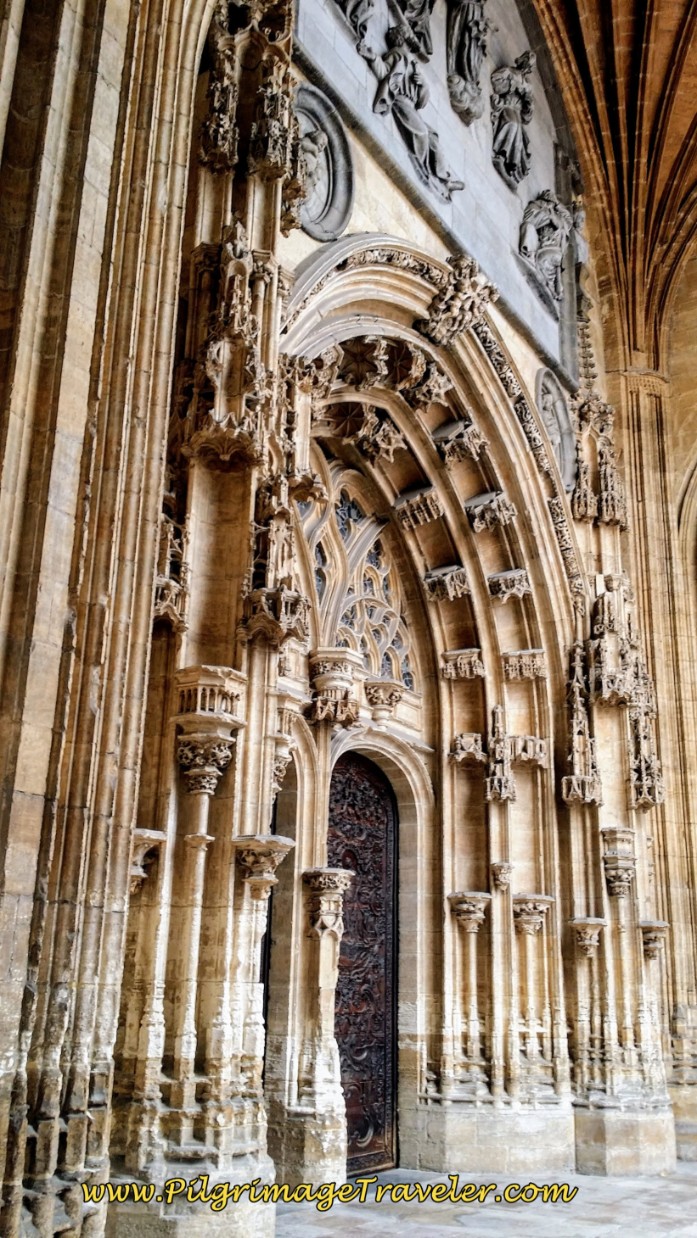 Cathedral Entryway
Cathedral Entryway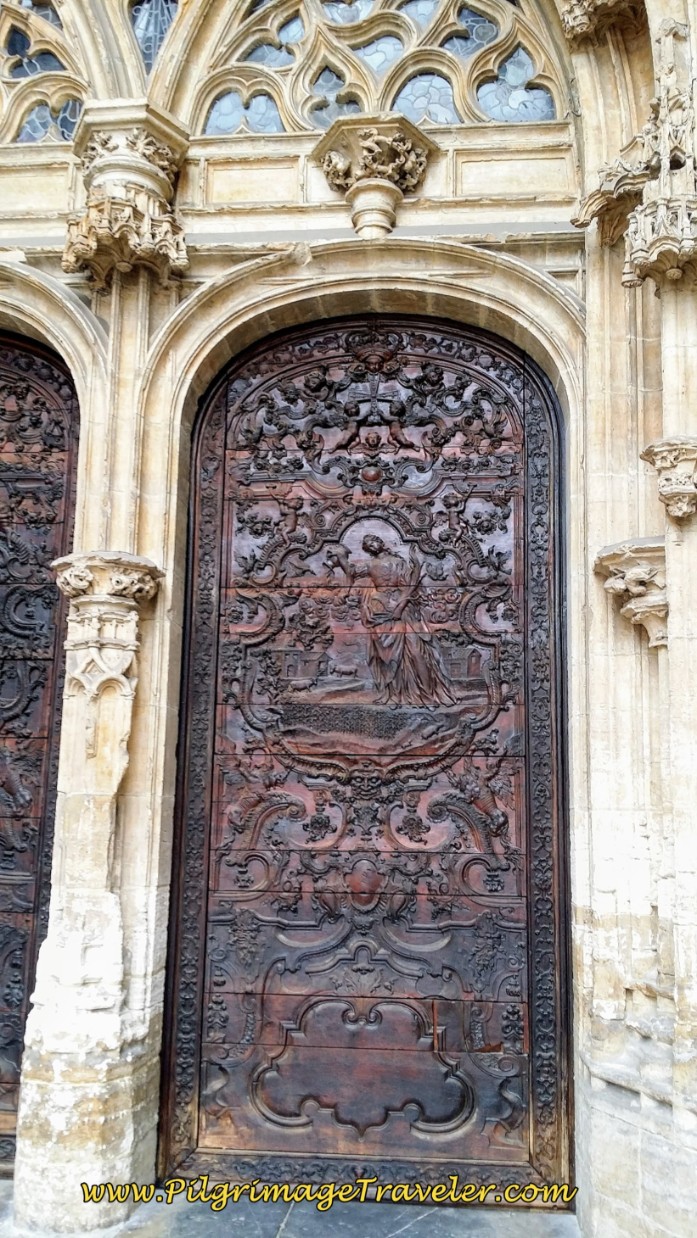 Cathedral Door
Cathedral DoorAfter entering the doors, you are directed to the ticket office. Don't forget to get your first stamp (sello) here for your Camino de Santiago! My husband did not have his pilgrim's passport with him, so we had to hurry and go back to get the stamp before the cathedral closed at 7 p.m. You can also buy a Credential (the pilgrim's passport) here if you do not yet have one.
Your entrance ticket includes an audio guide for a self-guided tour. The entire tour takes a few hours, so make sure you give yourself enough time for this.
Once inside the grand nave to the cathedral, the sights are breathtaking. Here is the central nave and the gloriously ornate altar.
I took so many photos of the altar! Here is a close-up of the carvings. The amount of human effort it took to produce each scene is quite astounding.
The side altars in the cathedral are almost as magnificent as the central. The one shown is of a female saint, which one, I am not sure. Also shown is one of the ever present images of St. James, or Santiago, as he is seen in pilgrim garb on a colonnade in the cathedral.
Next up on our tour of the Cathedral was the cloister. As always, walking in this place brings a serenity to one's heart and soul that is not found outside.
One of the vestiges of the original 9th century cathedral, built by Alfonso II, is the Crypt of Saint Leocadia, below. You can see it beside the cloister, when you tour the cathedral. Apparently, Leocadia was a martyr that was celebrated here in this very old, and very low vault with a small and simple altar.
Can you envision Alfonso II, himself, kneeling before this very altar? Gives me chills.
According to the record, Alfonso was quite pious and ordered that holy relics be brought to the cathedral from the nearby parish of Toledo in the 9th century, after the original cathedral was built.
On the second floor of the original pre-Romanesque cathedral, is the Cámara Santa or Holy Chamber. Tourists are not allowed to photograph this area, so to see some images, click on the link to the cathedral that I have provided.
In a golden chest within the Holy Chamber, among other cathedral treasures, houses the famous Shroud of Oviedo. It is believed that this blood-stained piece of cloth covered the face of Jesus in his burial chamber.
Apparently, in the Bible, the book of John documents a separate cloth for the head of Jesus in chapter 20: 6 - "Then Simon Peter came along behind him and went straight into the tomb. He saw the strips of linen lying there, 7 as well as the cloth that had been wrapped around Jesus’ head. The cloth was still lying in its place, separate from the linen." (NIV)
The Shroud of Oviedo is not displayed, but only on the holiest of days a few times a year. To see a photo of it, click here.
Also on the upper floors of the Cathedral, one can visit the cathedral museum on the entry ticket. There is a lot of art and history displayed here. The museum is worthy of a visit if you have the time.
You can read all about the Oviedo Cathedral, by clicking here. The history of this place is fascinating. Allow plenty of time to visit this sacred site, especially if you want to take in all it has to offer.
Jump to Camino Primitivo Stages
In the Main Plaza of Oviedo, Spain
The main landmark in the center of the town of Oviedo, Spain is the square in front of the cathedral, in the photo, below. Many people are usually milling about here, and there are adjacent cafés where you can sit down for a cup of café con leche and admire the cathedral.
Here is my husband standing in the plaza in front of the cathedral.
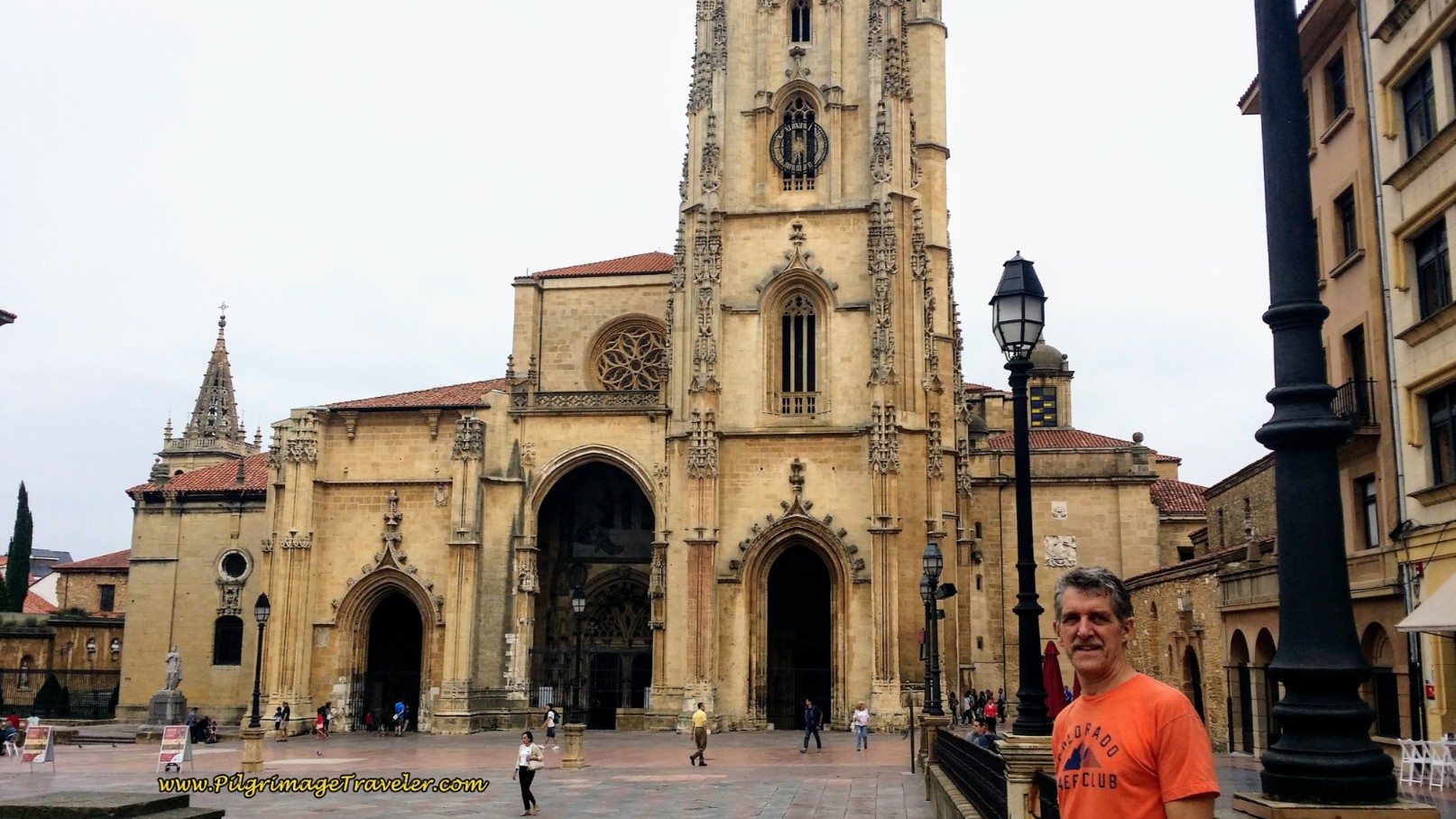 Rich at the Cathedral of Oviedo
Rich at the Cathedral of OviedoTo the immediate right of the cathedral is the historic Parroquia de San Tirso El Real. This parish church is simple in comparison to the Cathedral of Oviedo, yet still deserving of a visit. It is dedicated to St. Thyrsus and was originally a Romanesque-style building. But because of fires it needed to be rebuilt enough times that little of the original building remains.
We only spent a few minutes, strolling around inside.
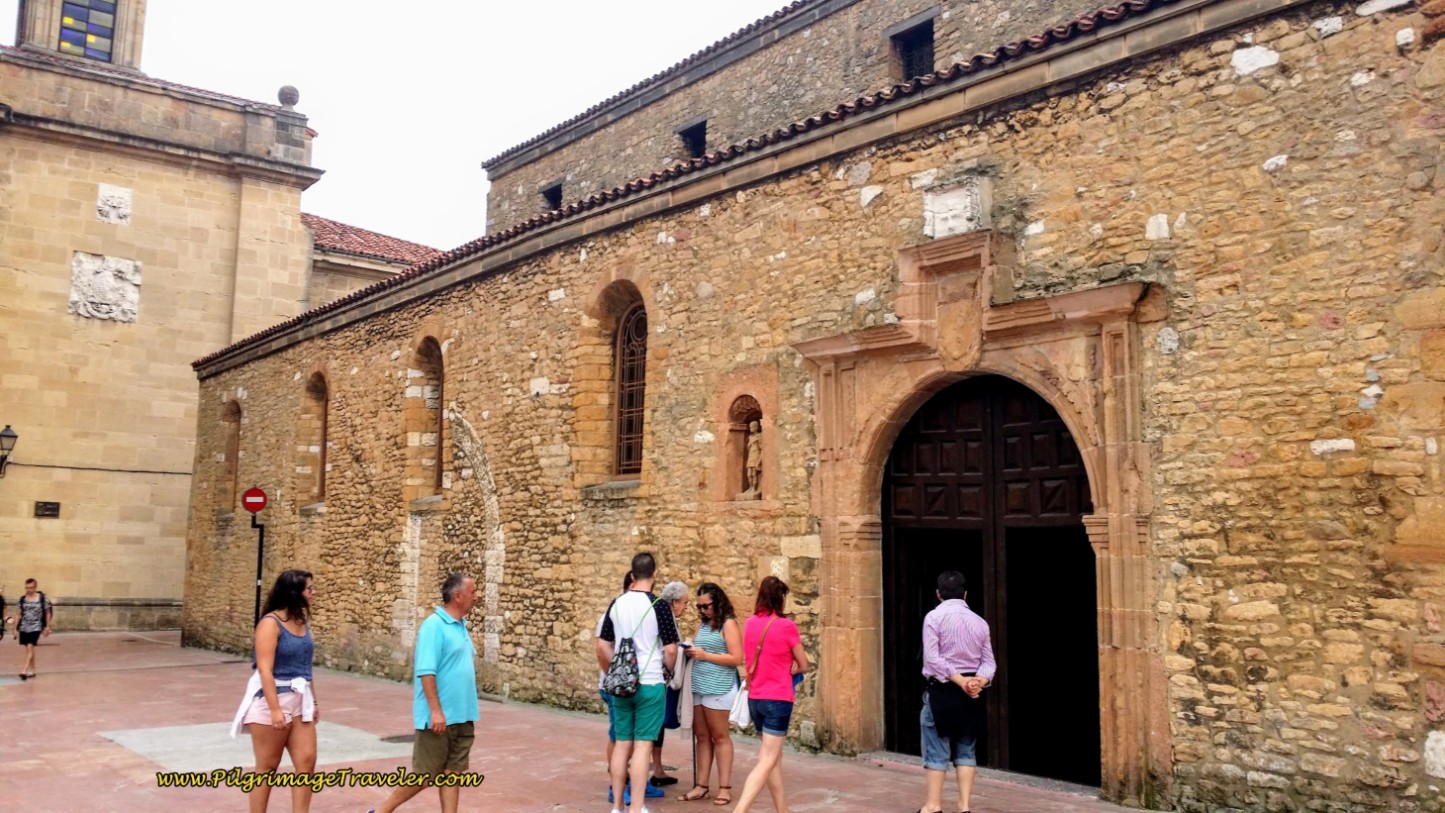 Parroquia de San Tirso El Real
Parroquia de San Tirso El RealAlso in the main square of Alfonso II is the oldest building in Oviedo, Spain, the Casa de la Rúa, shown next. It is the only building to survive the fire of 1512 on Christmas Eve. It was built in the 15th century as a palace and is of a typical medieval style.
Unfortunately, the Casa is only open to the public during exhibitions and other cultural events. We were unable to visit the inside during our tour of the city.
To the west of the Cathedral, is the Palacio de Valdecarzana-Heredia. Built in the 17th century, it is a palace of the lineage of the Diego de Miranda family. This family had economic and political power as evidenced by the proximity to the cathedral.
Jump to Camino Primitivo Stages
Around the Town in Oviedo, Spain
There is a historic fountain called the Fuente de Foncalada which we saw next, but initially had a bit of trouble finding, because it is quite small and lower than the street level.
Just walk north on the Calle Gascona until it ends and you will find the fountain. Look to your right, and downwards and you will see the photo below!
Here is the front view of this historic fountain, built in the 9th century by King Alfonso III. It is in the Romanesque style and is believed to be one of the oldest buildings in Spain.
Party Time!
As Oviedo, Spain would have some of its iconic holy relics and sites, so it also has a famous party street called the Calle Gascona. You will have no trouble finding the place as it is just down the hill to the north, from the Cathedral!
The bright yellow letters greet you as you walk into this block; Gascona.
If you are coming from the opposite direction and you are walking up the hill towards the cathedral, you can’t miss the barrel! As the late afternoon turned to evening, the street absolutely came alive!
We had the well-known cider, with a selection of local Asturian cheeses. We really liked their blue cheese, with a strong flavor that you would expect, called Cabrales.
The cider is not really like our hard cider in the USA. It has a milder flavor, yet tastes very fermented. It is a taste that I think one would acquire! I found the second bottle that we shared to be a bit tastier than the first! Ha!
The best part of drinking the cider is that it is poured from above shoulder level by the waiter. Something about this aerates the cider so that it is better to drink. It felt more like a tourist show to me, but then, I am truly not a cider expert!
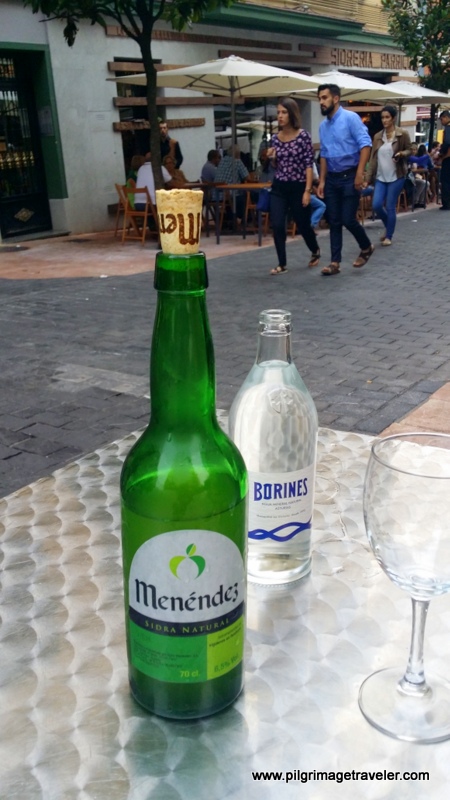 The Most Common Cider
The Most Common Cider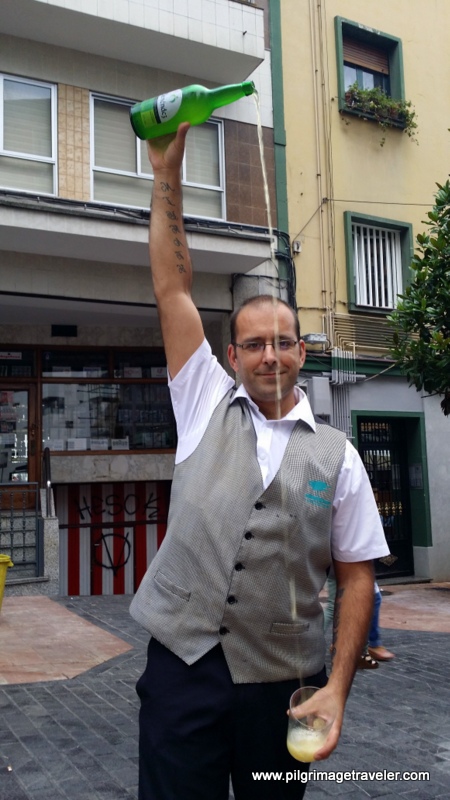 Waiter Aerates the Cider
Waiter Aerates the CiderI hope you enjoyed your tour of Oviedo, Spain. There are more UNESCO world heritage churches at Monte Naranco, just outside of town that we toured the following day on our first official stage of the Original Way. There is also the UNESCO church called the Santa Cristina de Lena, a few miles south of town and on the fifth day along the Camino de San Salvador. Click on the links to see photos of these churches.
May your Camino Primitivo be filled with a historical sense of this amazing place. May you sense the thousands of pilgrims who started their pilgrimage here, as you walk in their footsteps as a pilgrimage traveler on the Camino de Santiago. May your experience of your journey from Oviedo, Spain be filled with wonder, holiness and celebrations of this unique place!
The Camino Primitivo Stages
Please Consider Showing Your Support
Many readers contact me, Elle, to thank me for all the time and care that I have spent creating this informative website. If you have been truly blessed by my efforts, have not purchased an eBook, yet wish to contribute, I am very grateful. Thank-you!
Search This Website:
Follow Me on Pinterest:
Follow Me on Instagram:
Find the Pilgrimage Traveler on Facebook:
Like / Share this page on Facebook:
***All Banners, Amazon, Roamless and Booking.com links on this website are affiliate links. As an Amazon associate and a Booking.com associate, the Pilgrimage Traveler website will earn from qualifying purchases when you click on these links, at no cost to you. We sincerely thank-you as this is a pilgrim-supported website***
PS: Our guide books are of our own creation and we appreciate your purchase of those too!!
Shroud Yourself in Mystery, along the Via de Francesco!
Walk in the Footsteps of St. Francis, and Connect Deeply to the Saint and to Nature in the Marvelous Italian Countryside!
Recent Articles
-
Day One on the Camino Portugués, Lisbon to Alverca do Ribatejo
Apr 15, 25 08:19 PM
Our Day One on the Camino Portugués was much more beautiful and enjoyable than we had heard. -
Hiking the West Highland Way
Apr 11, 25 08:51 PM
Hiking the West Highland Way is a representation of all things Scottish, traversing 96 miles from the lowlands of Milngavie to Ft William, in the highlands. -
Way of St Francis eBook Guide (Via di San Francesco)
Apr 11, 25 08:49 PM
Our Way of St Francis eBook Guide, a digital guidebook is full of current information to assist you in finding your Way. In downloadable, digital, PDF format.
Need suggestions on what to pack for your next pilgrimage? Click Here or on the photo below!
Carbon fiber construction (not aluminum) in a trekking pole makes them ultra lightweight. We like the Z-Pole style from Black Diamond so we can hide our poles in our pack from potential thieves before getting to our albergue! There are many to choose from! (See more of our gear recommendations! )
Gregory BackPack - My Favorite Brand
Do not forget your quick-dry microfiber towel!
Booking.com
My absolute favorite book on how to be a pilgrim:
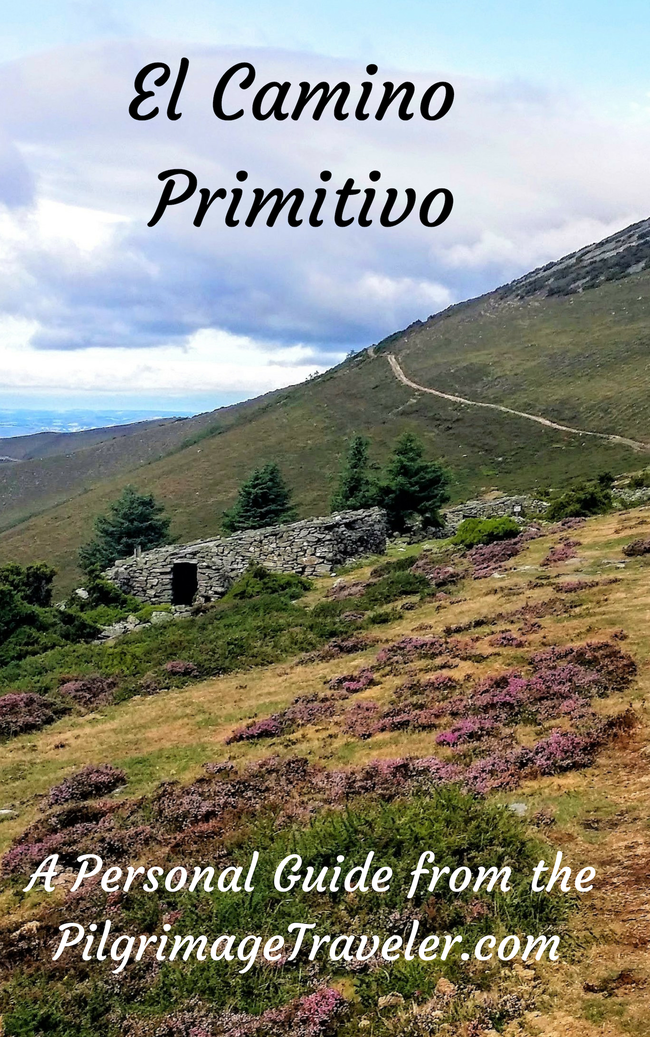
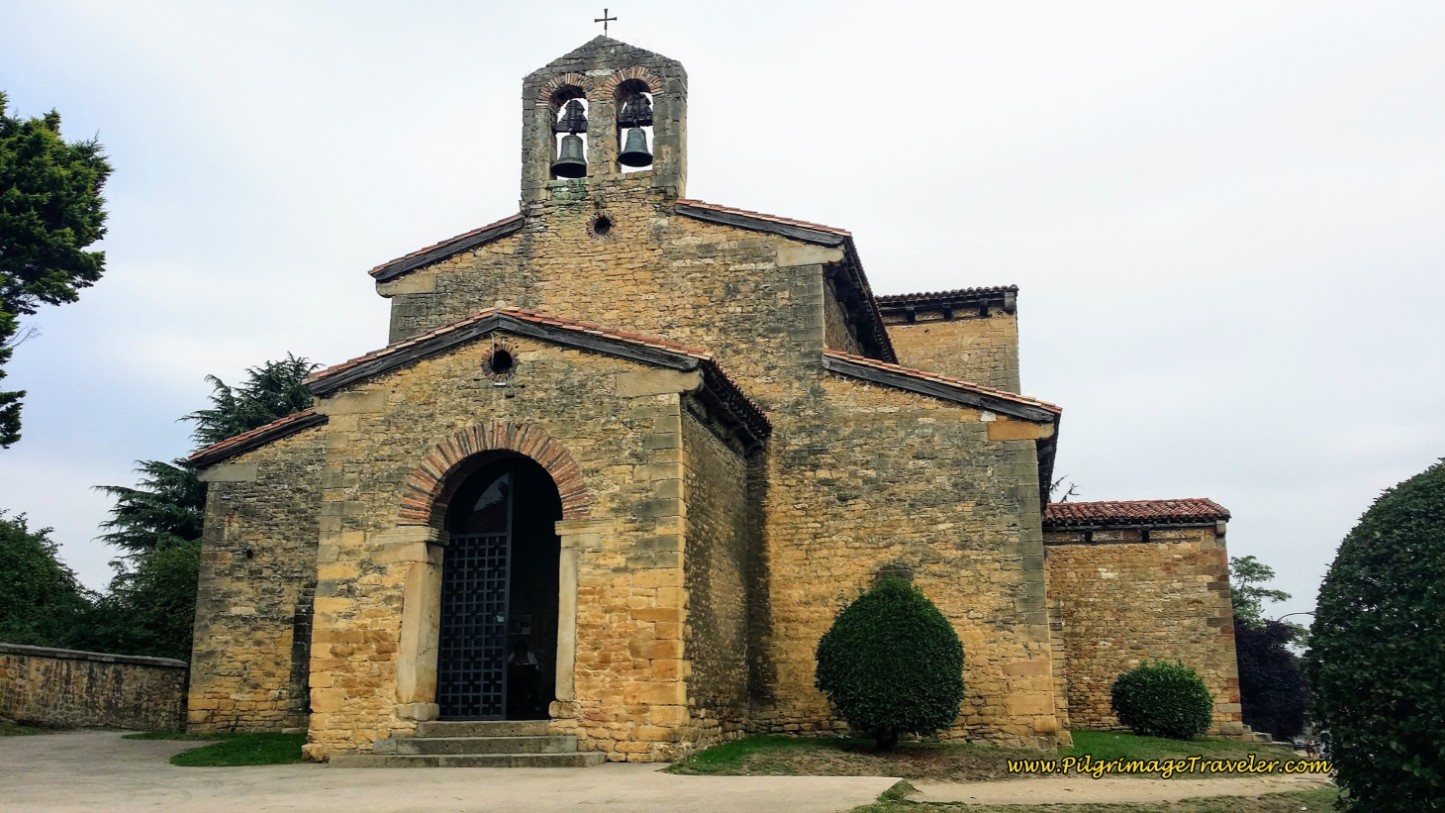
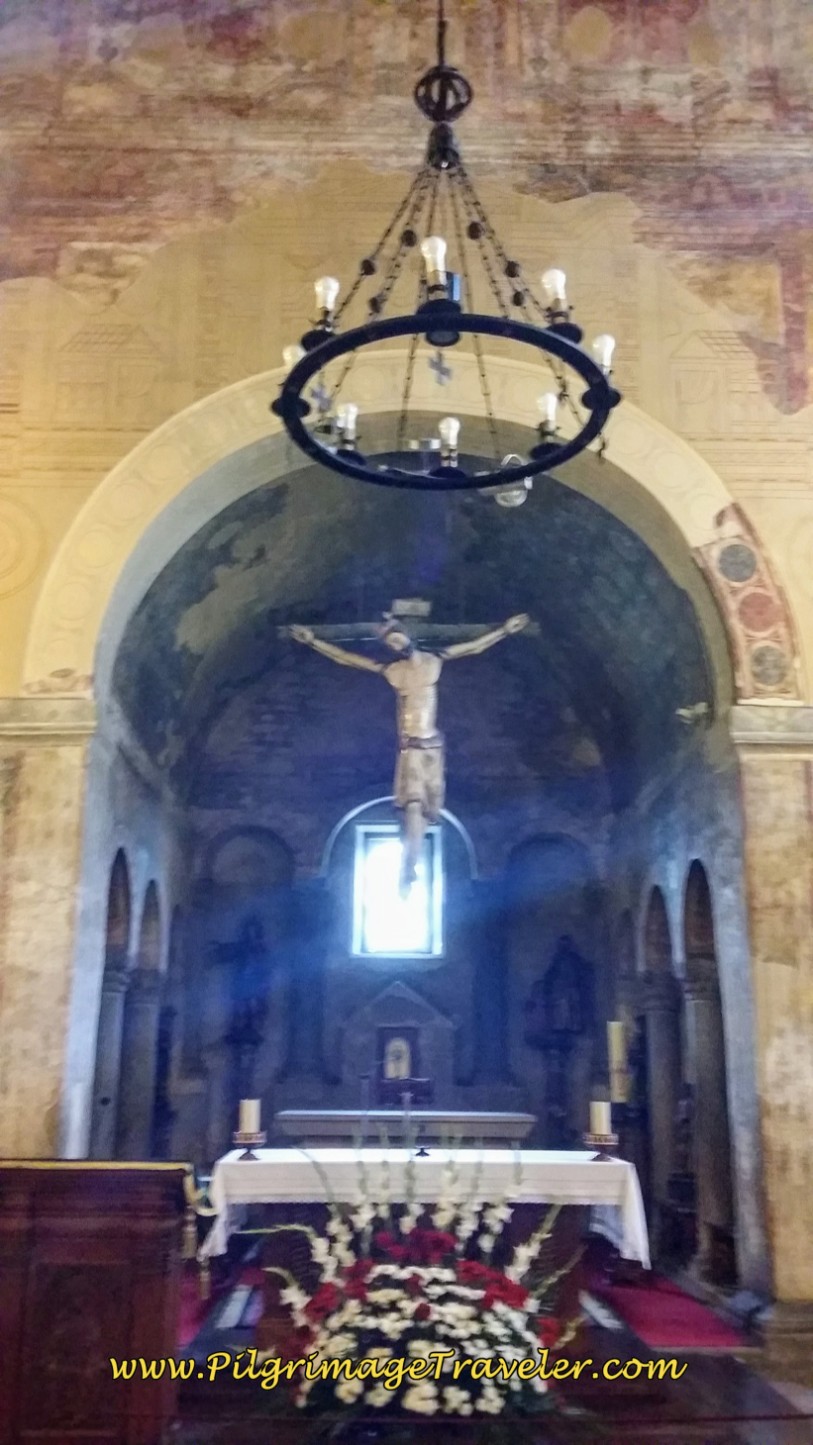
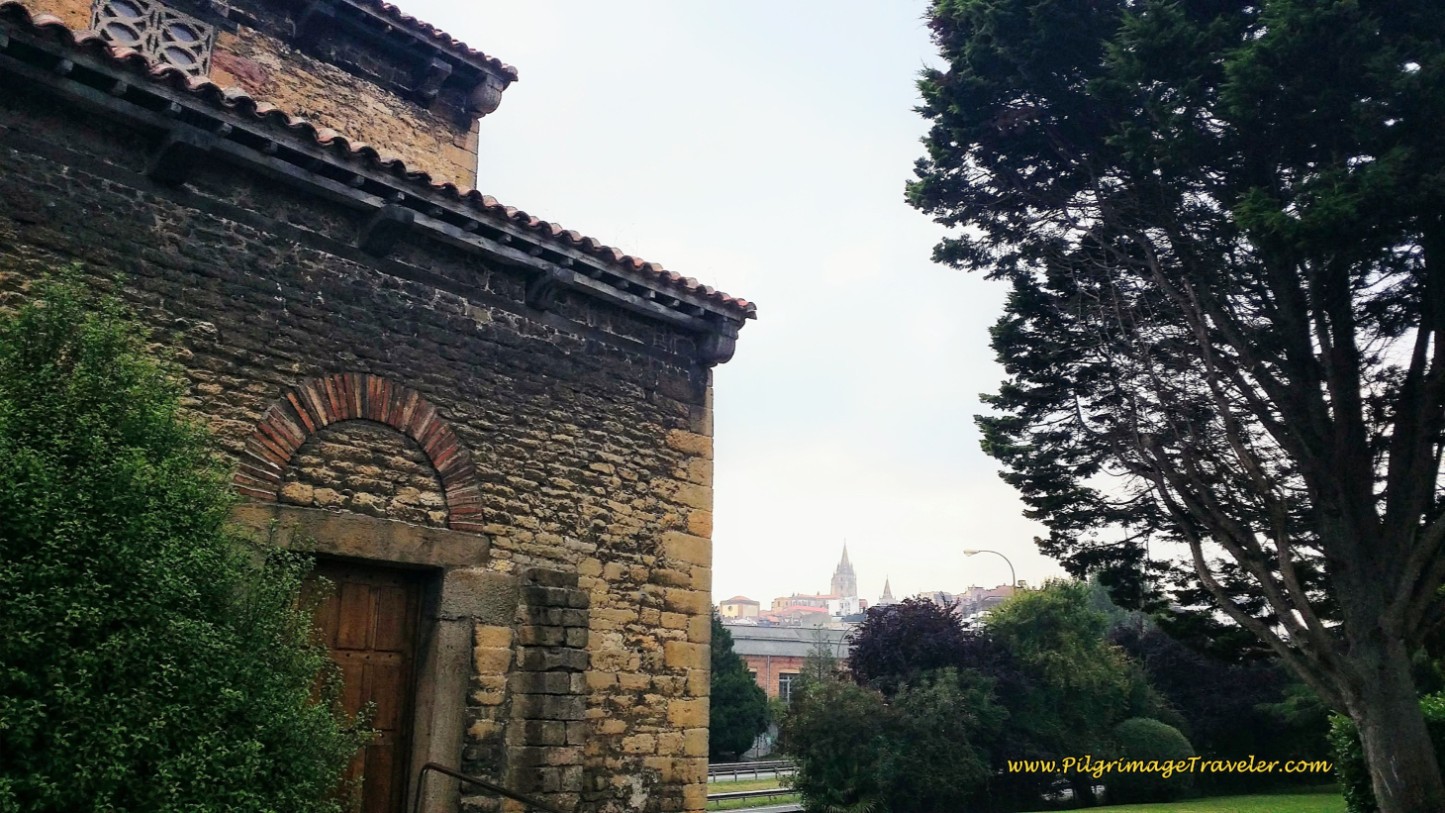
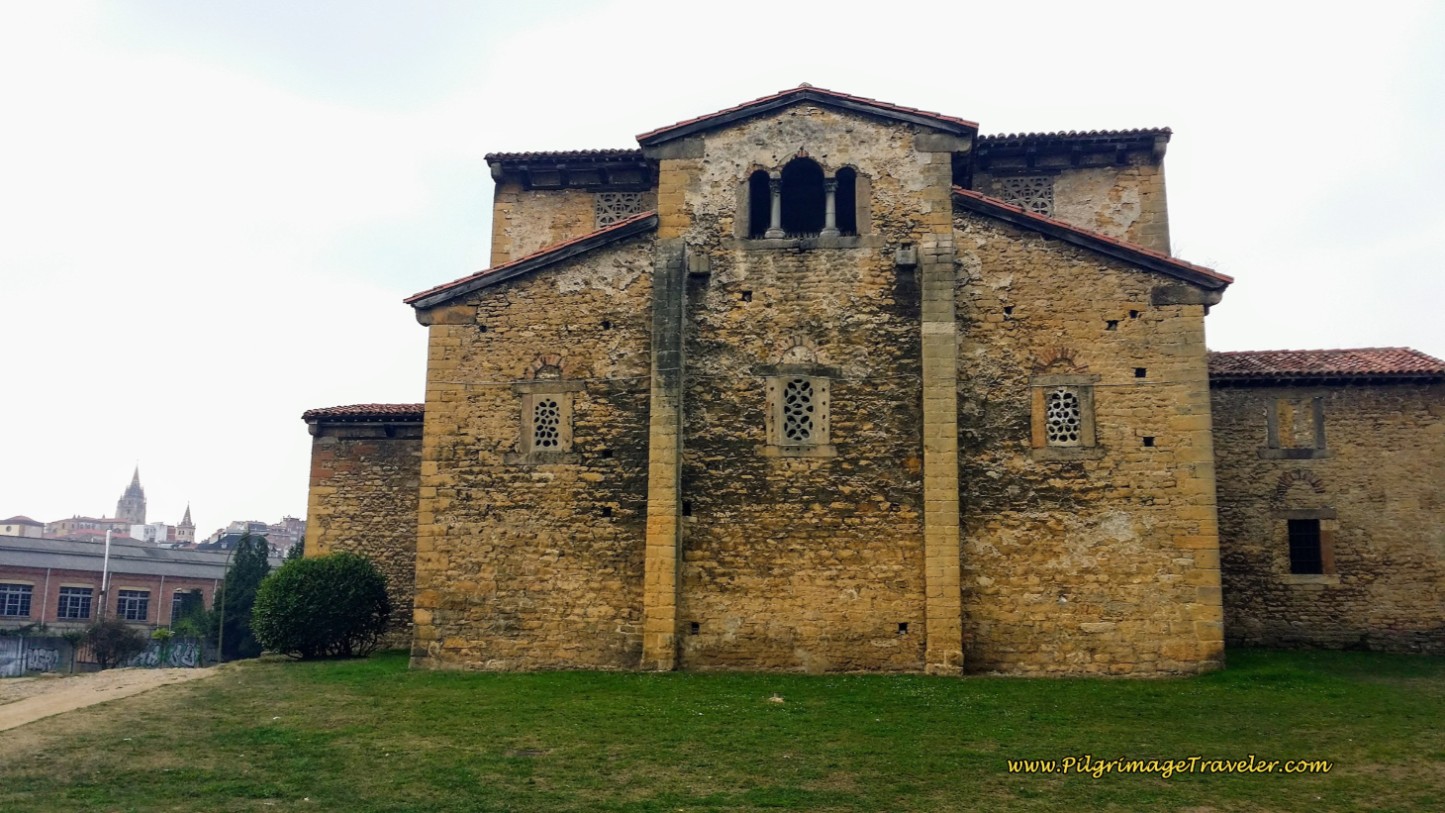
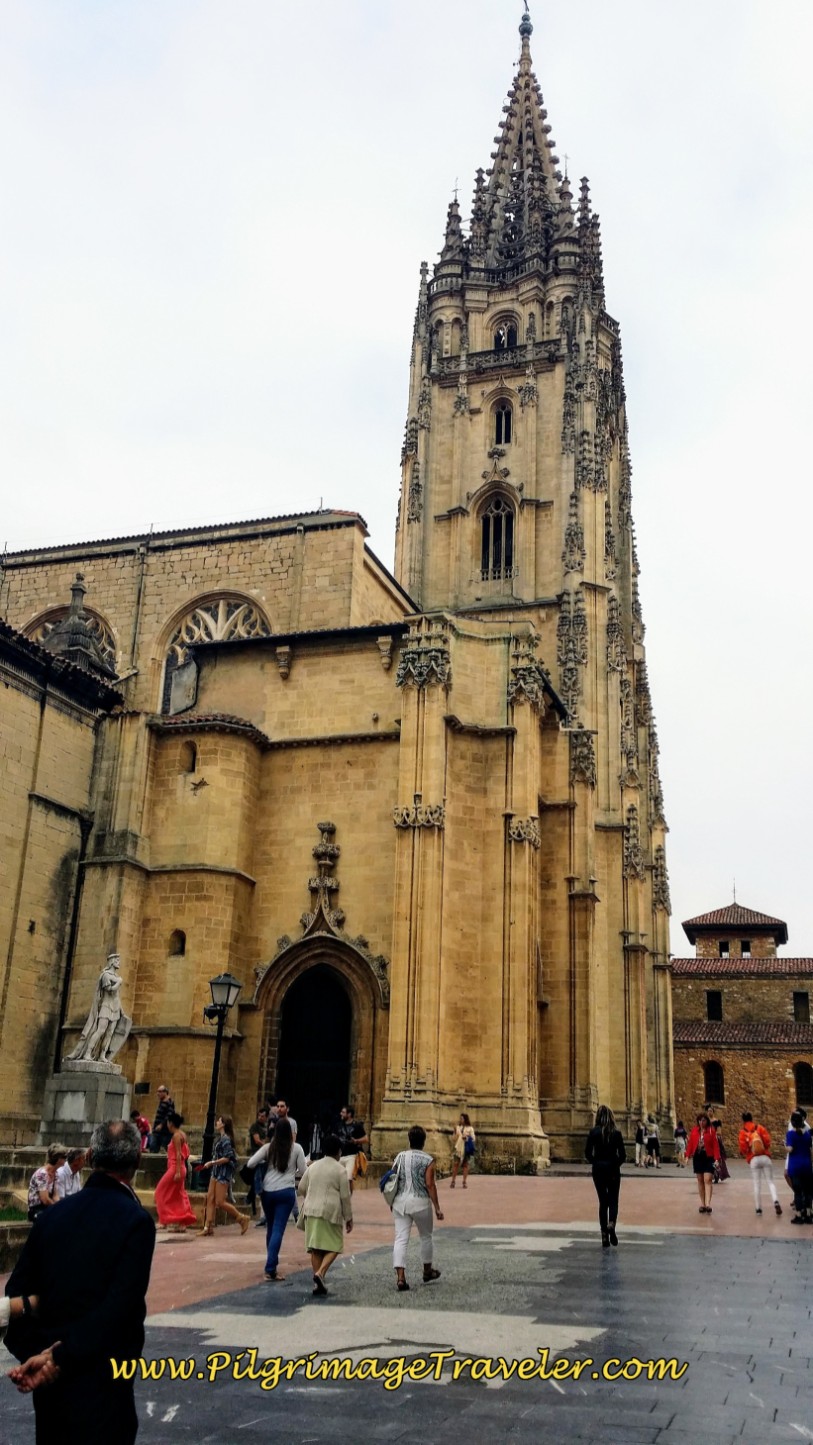
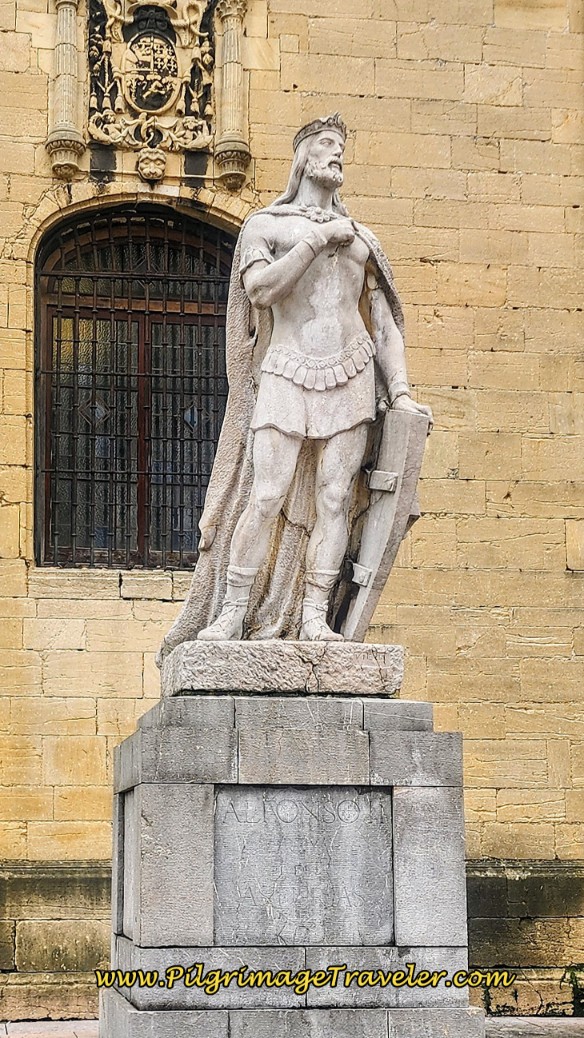
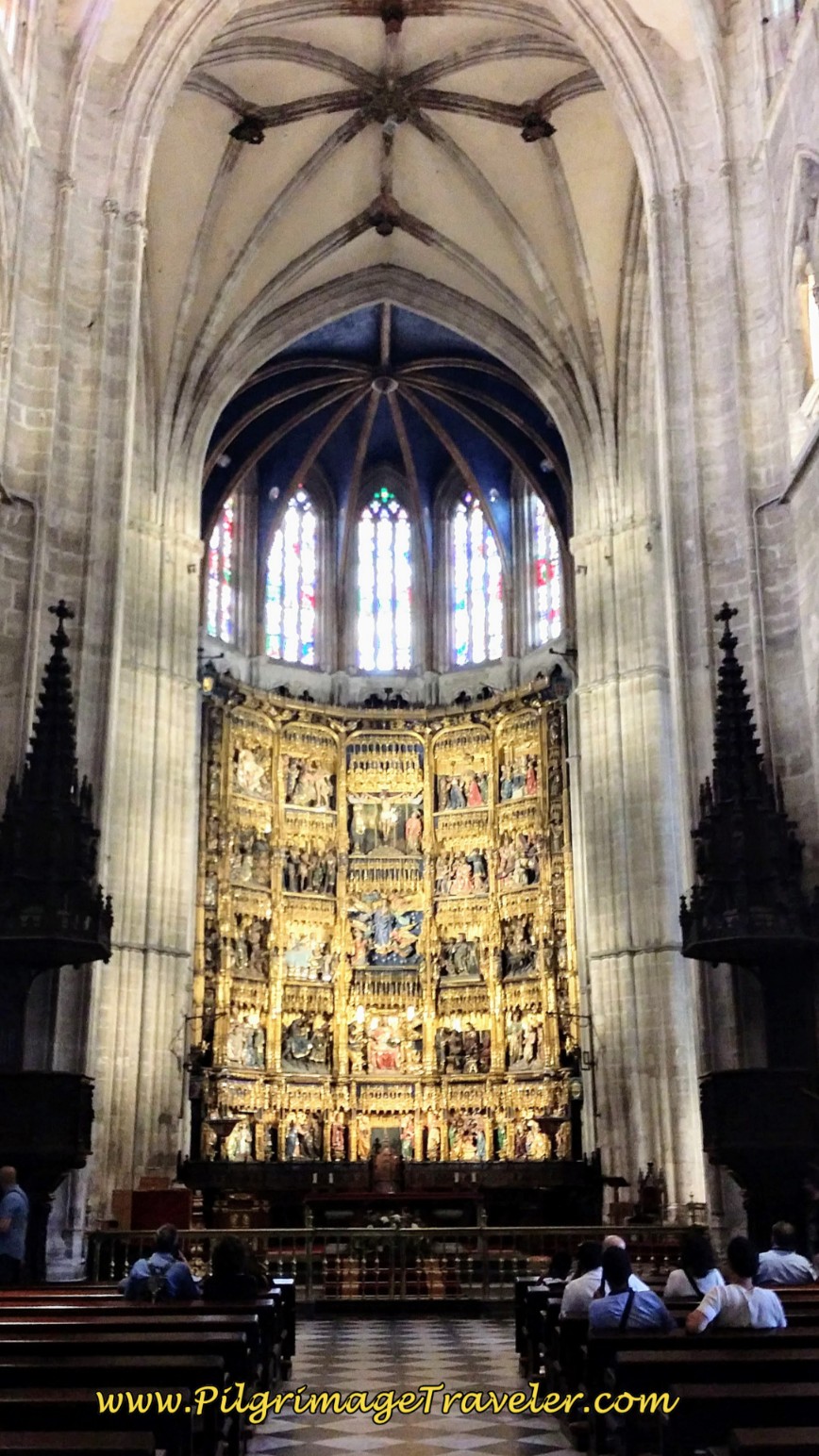
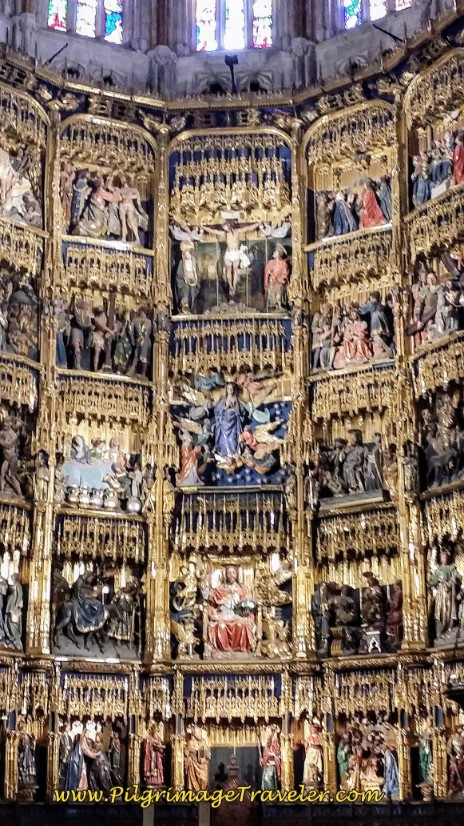
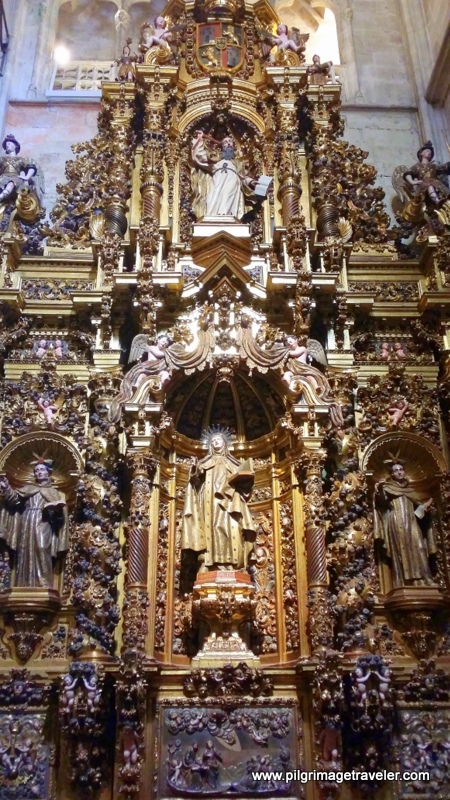
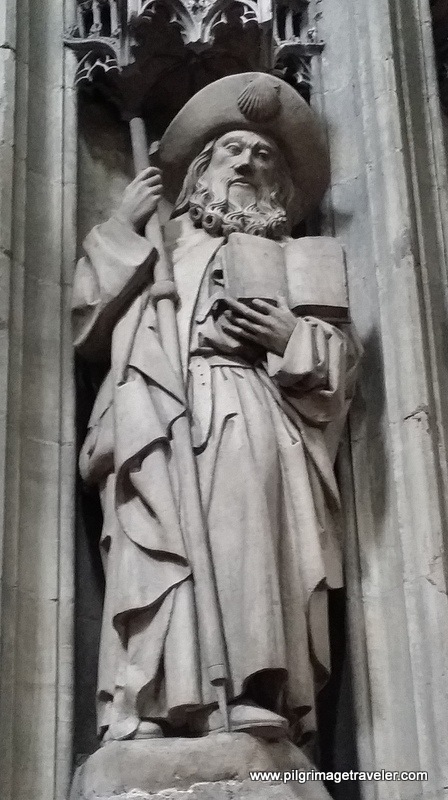
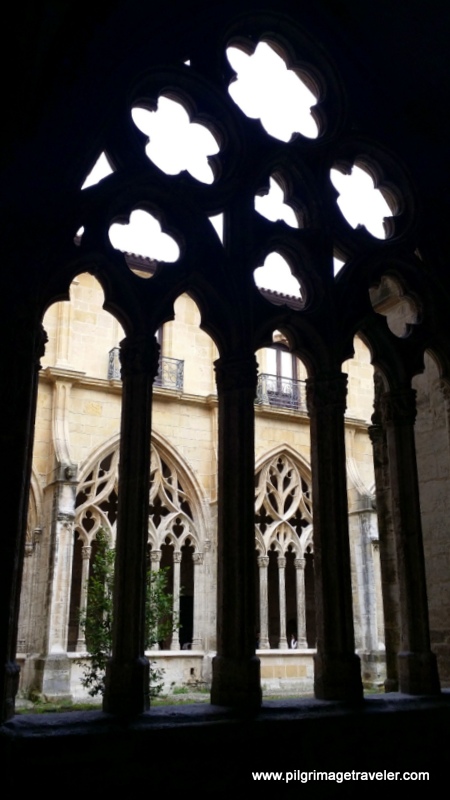
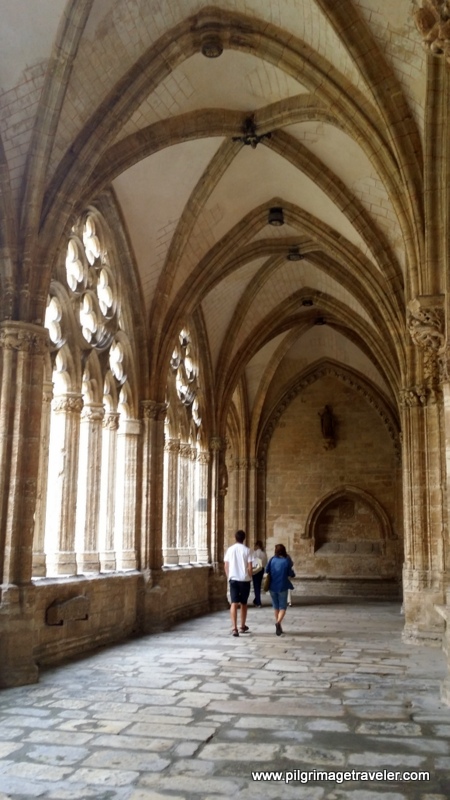
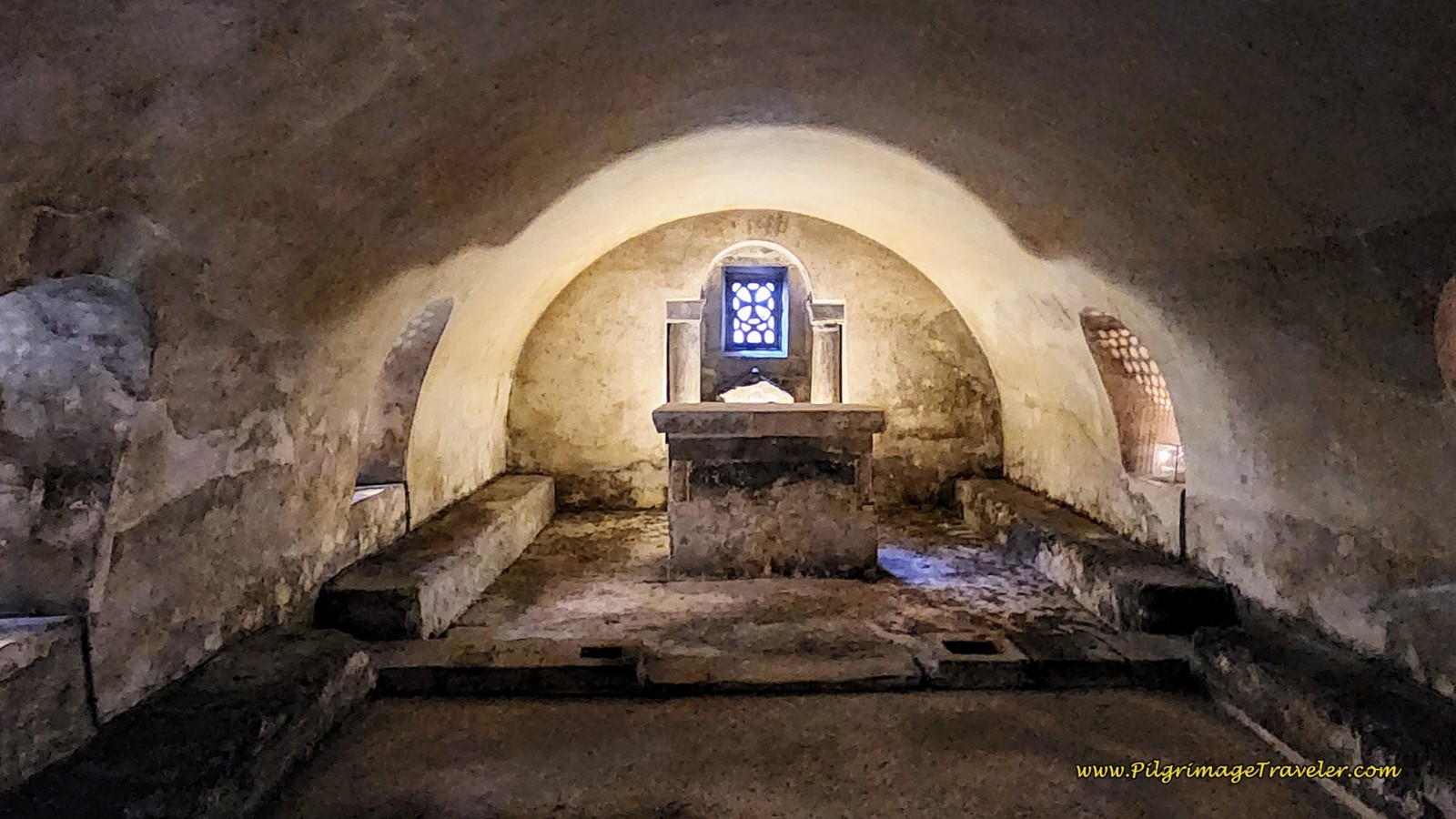
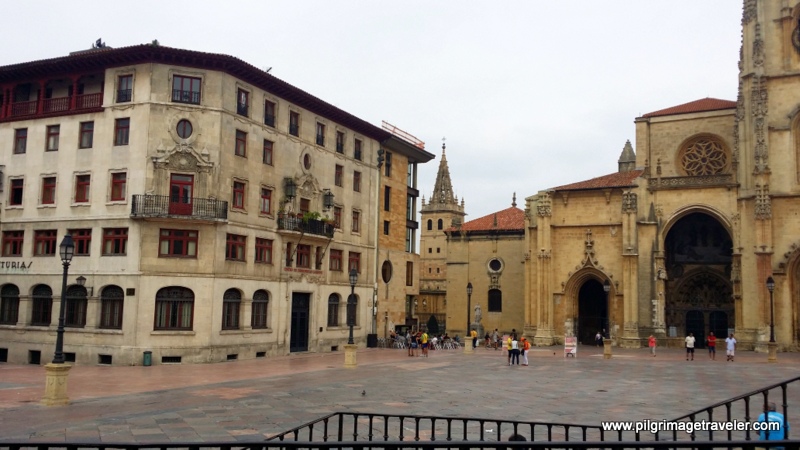
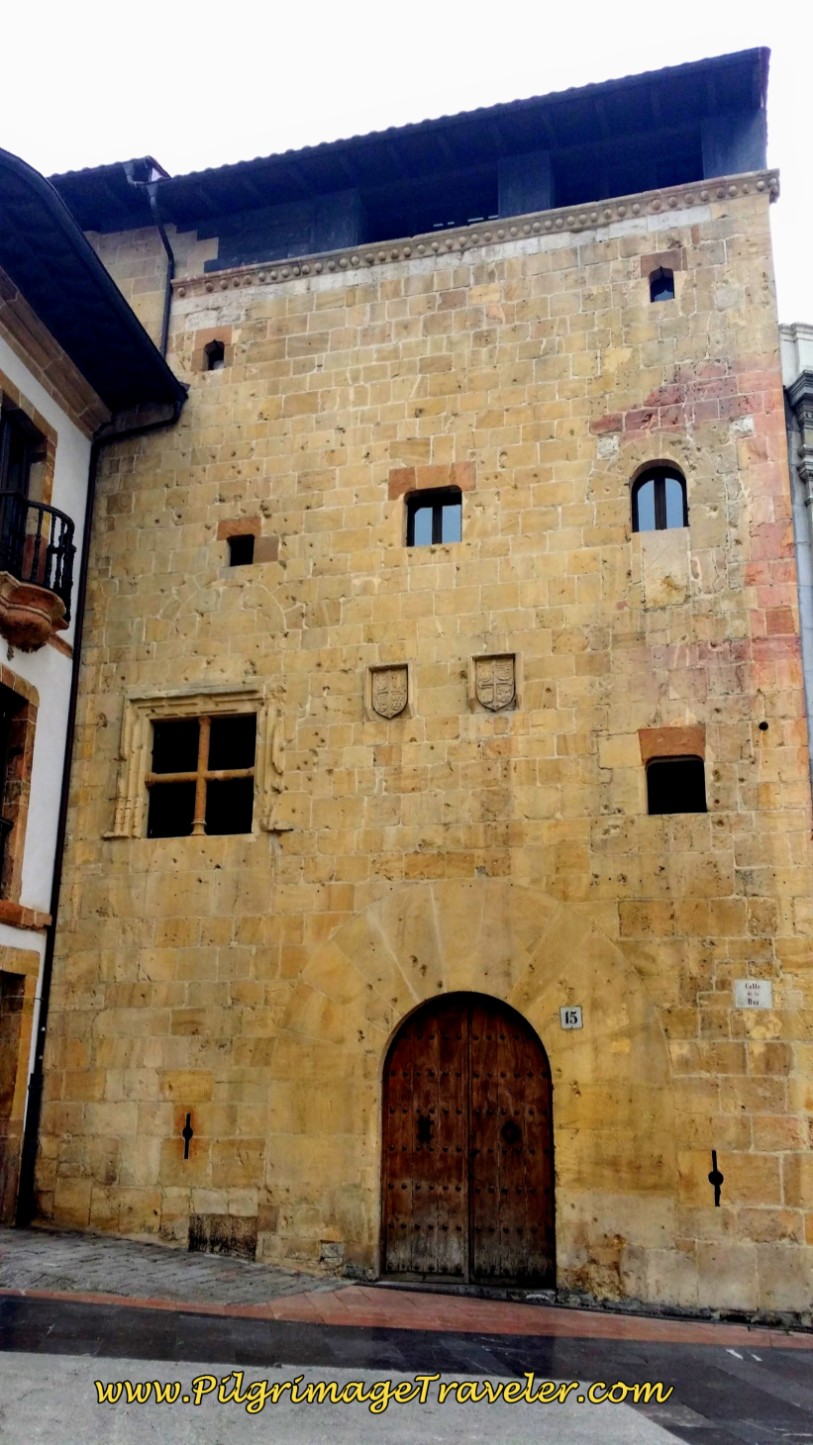
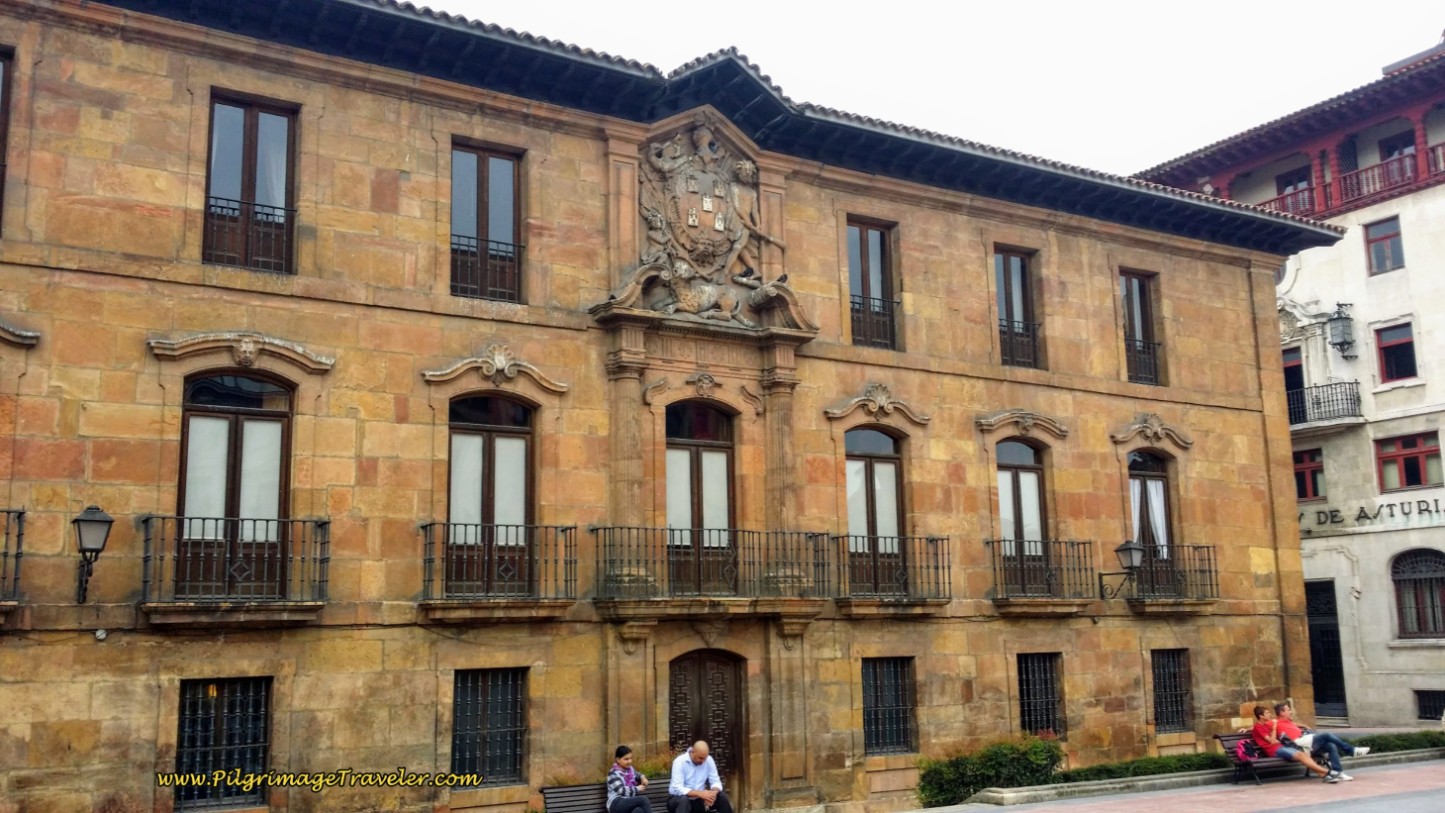
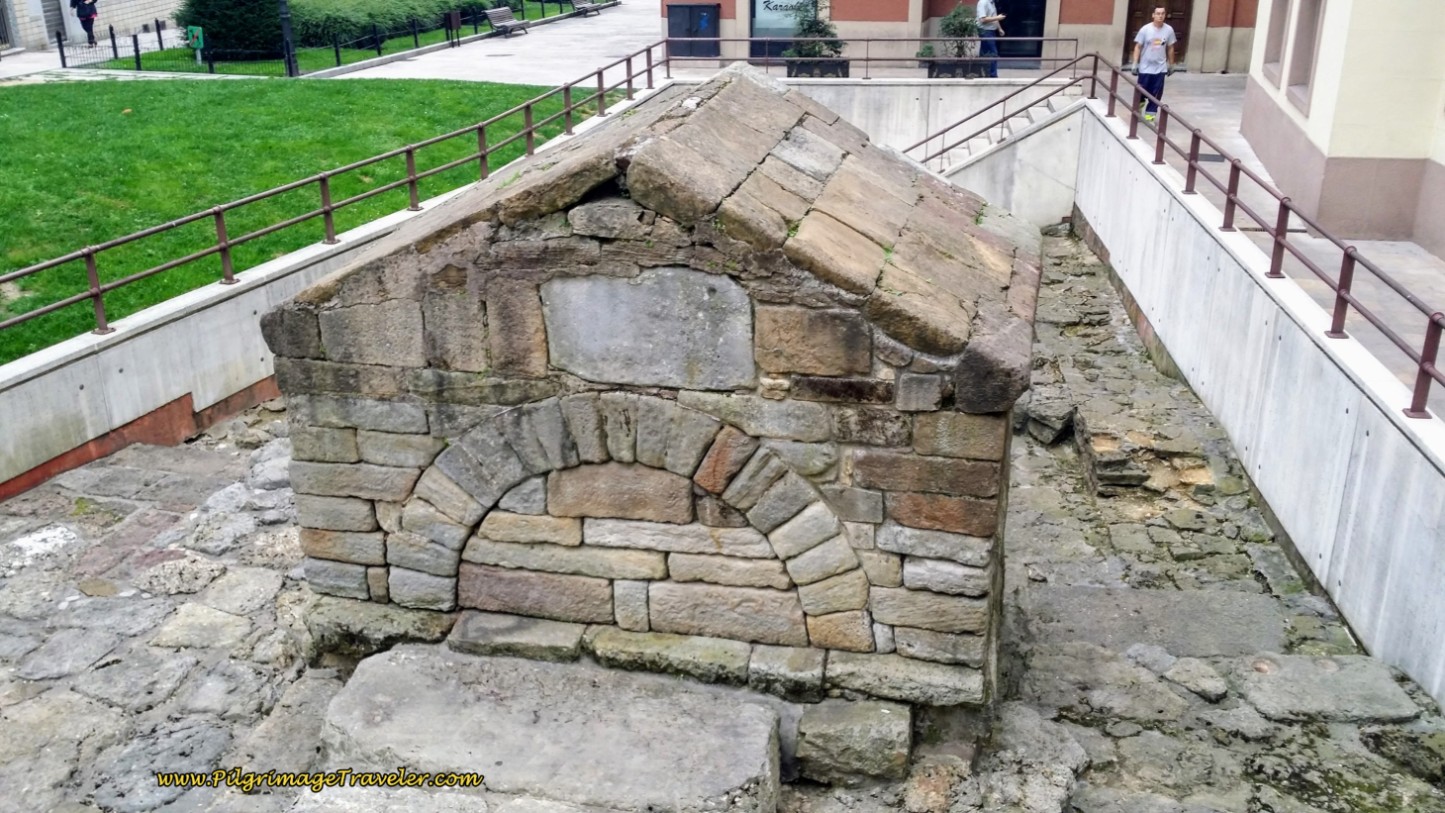
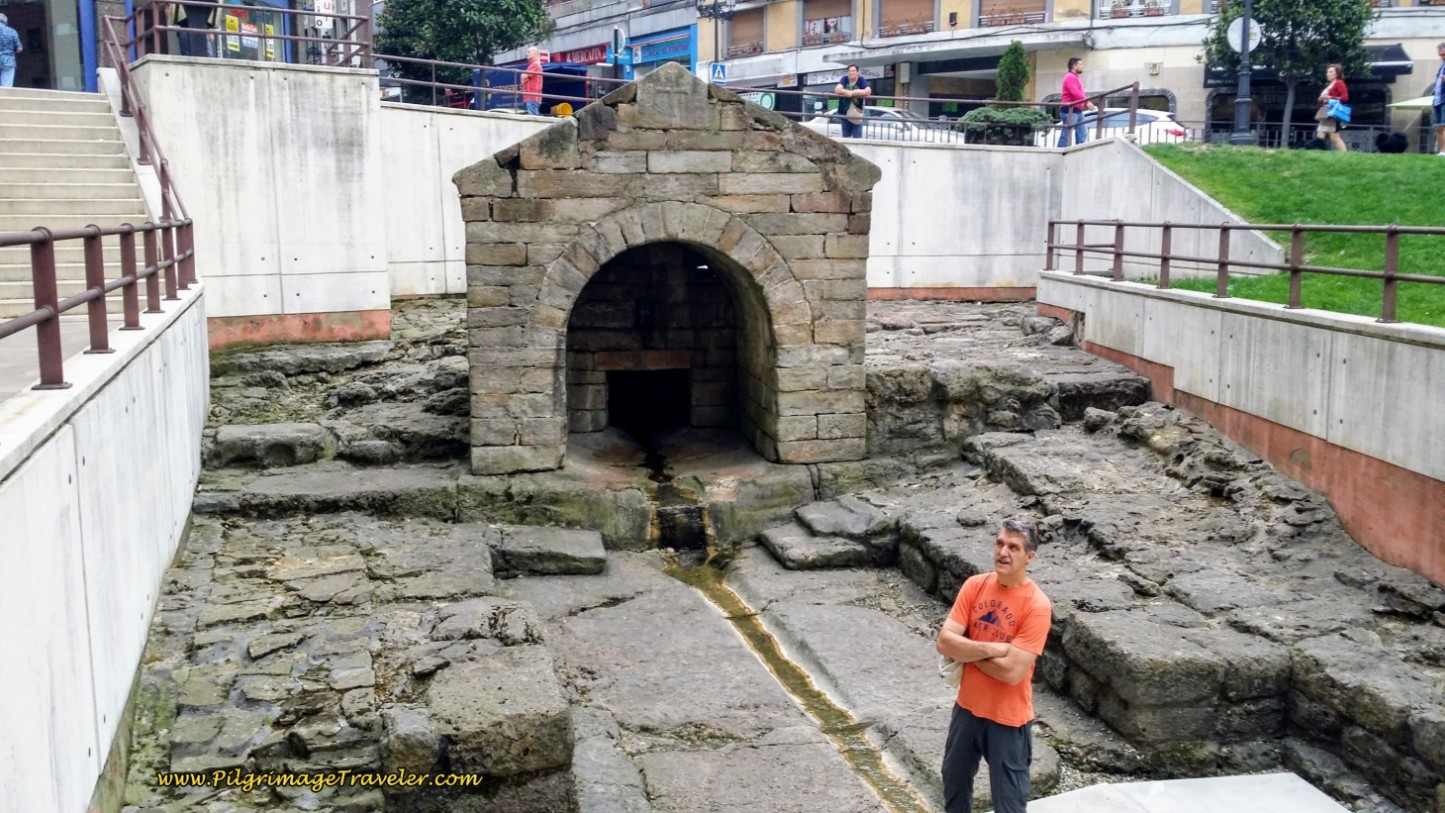
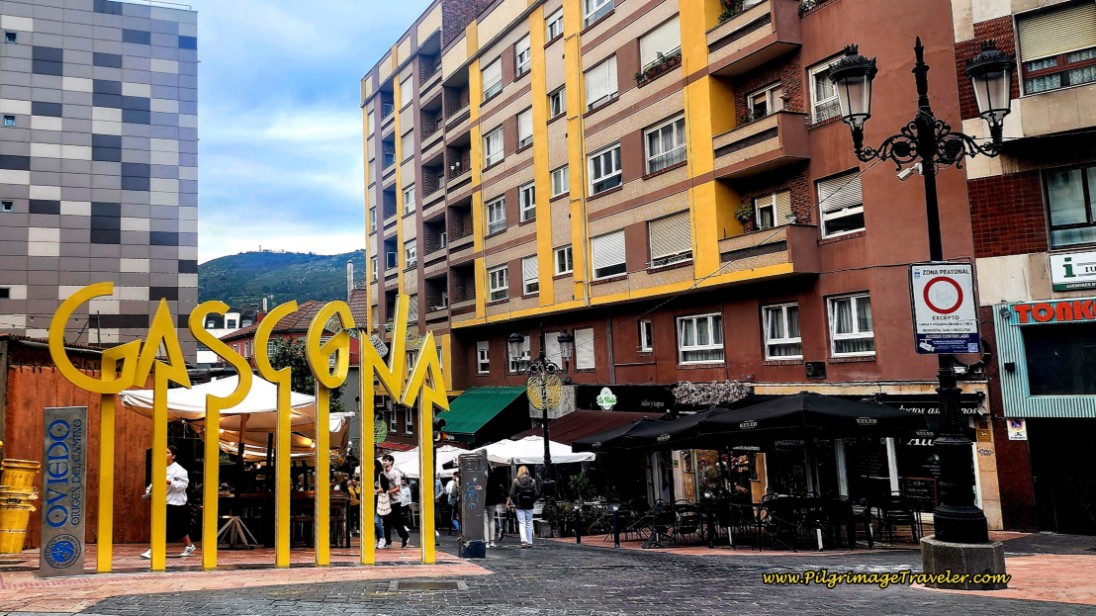
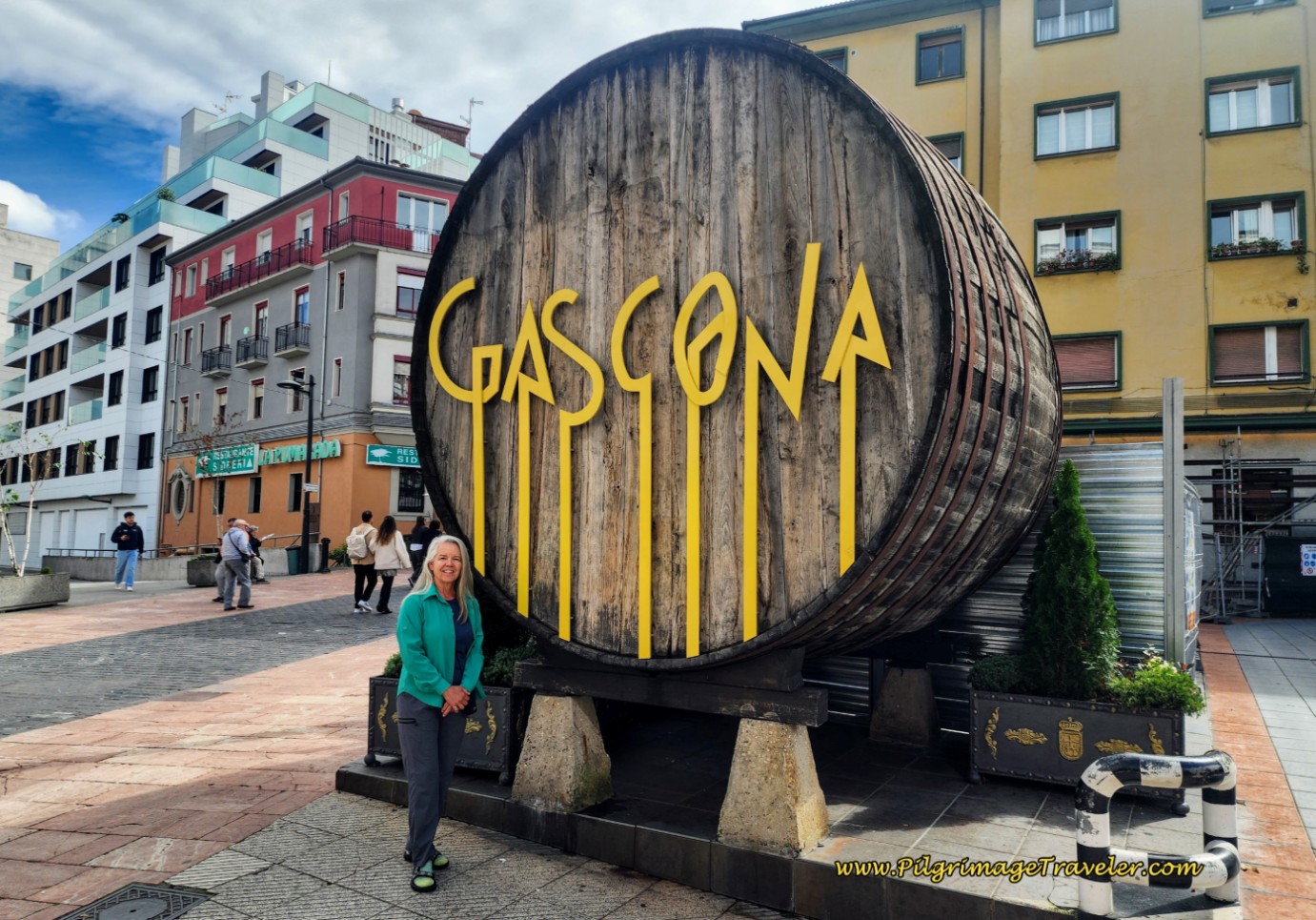
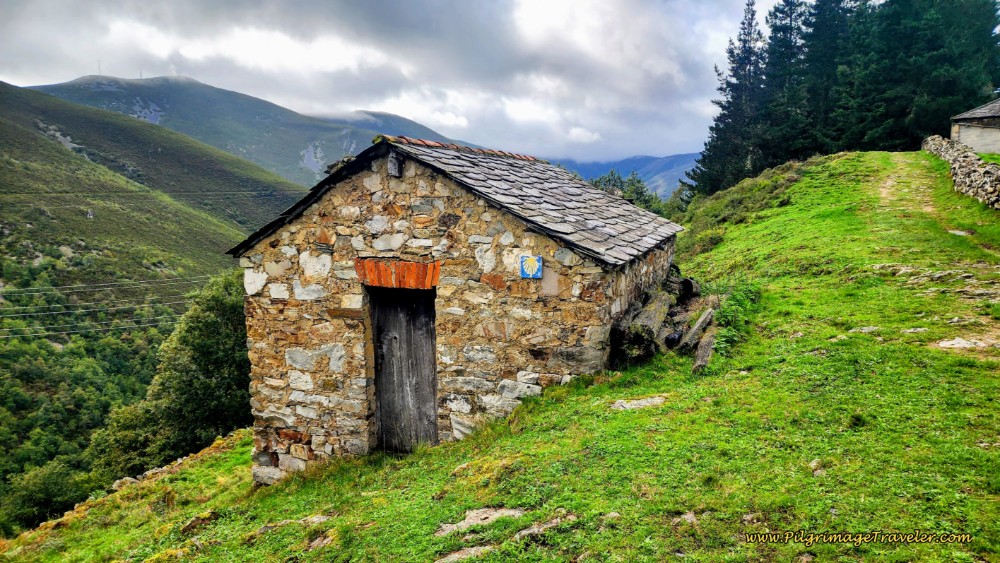
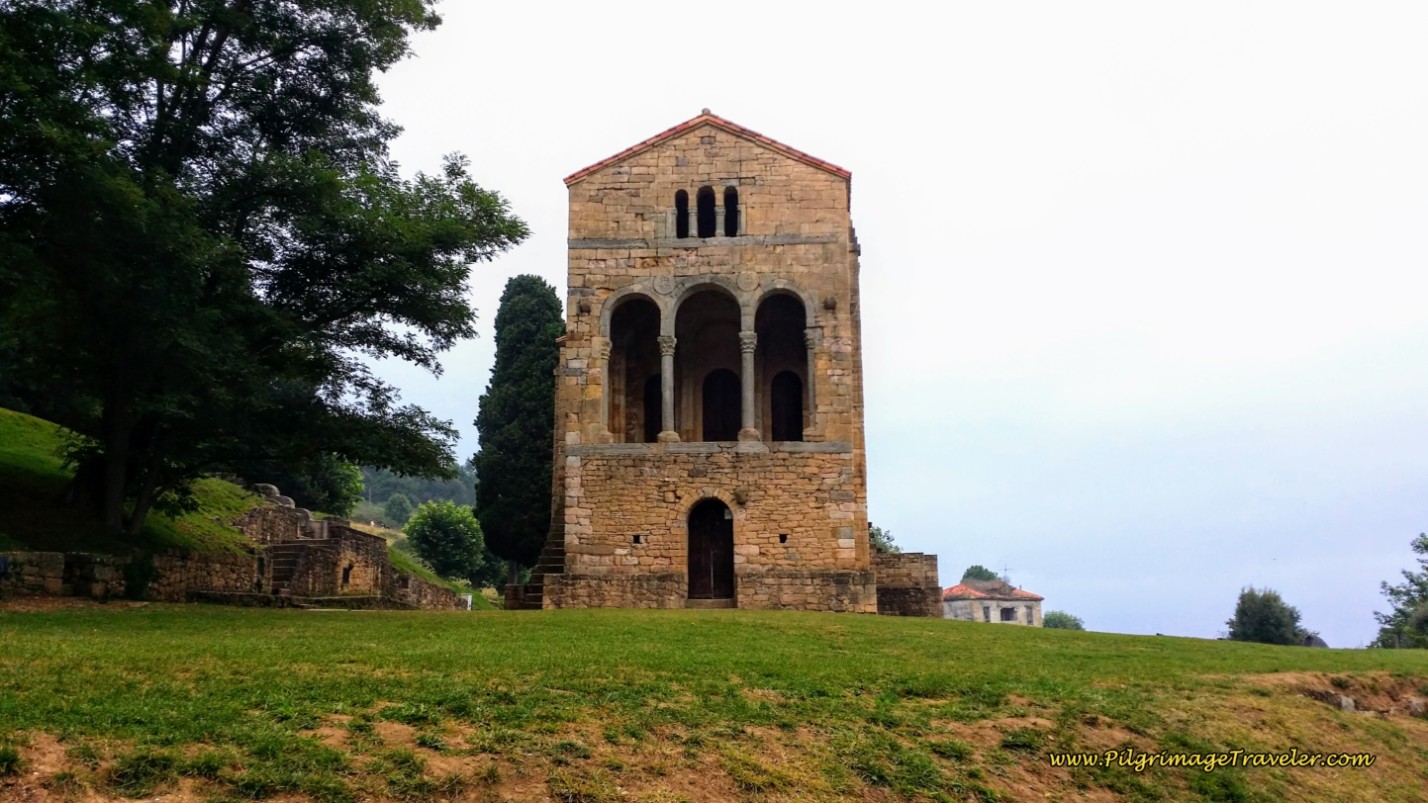
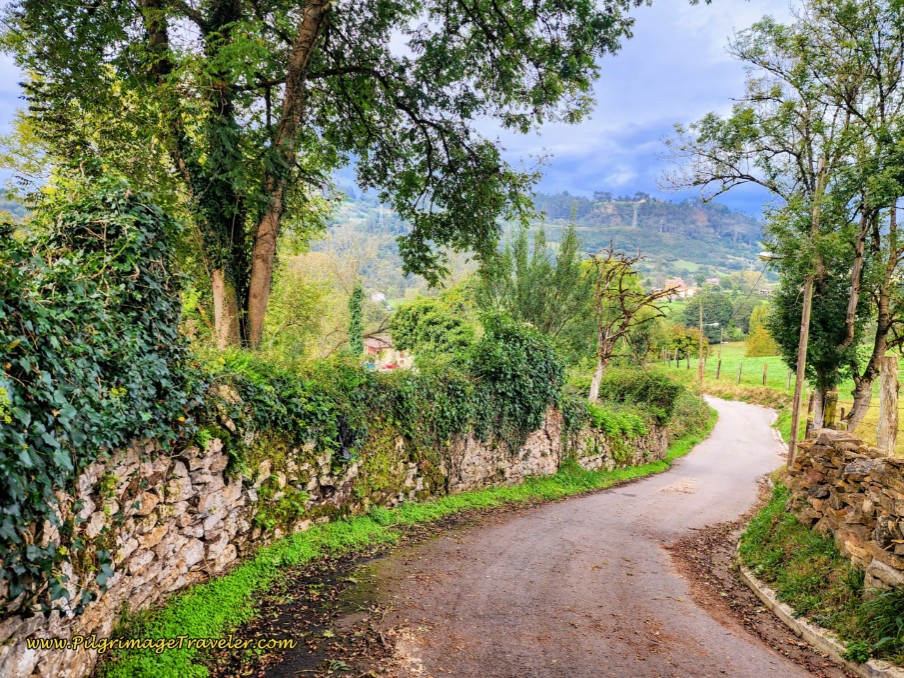
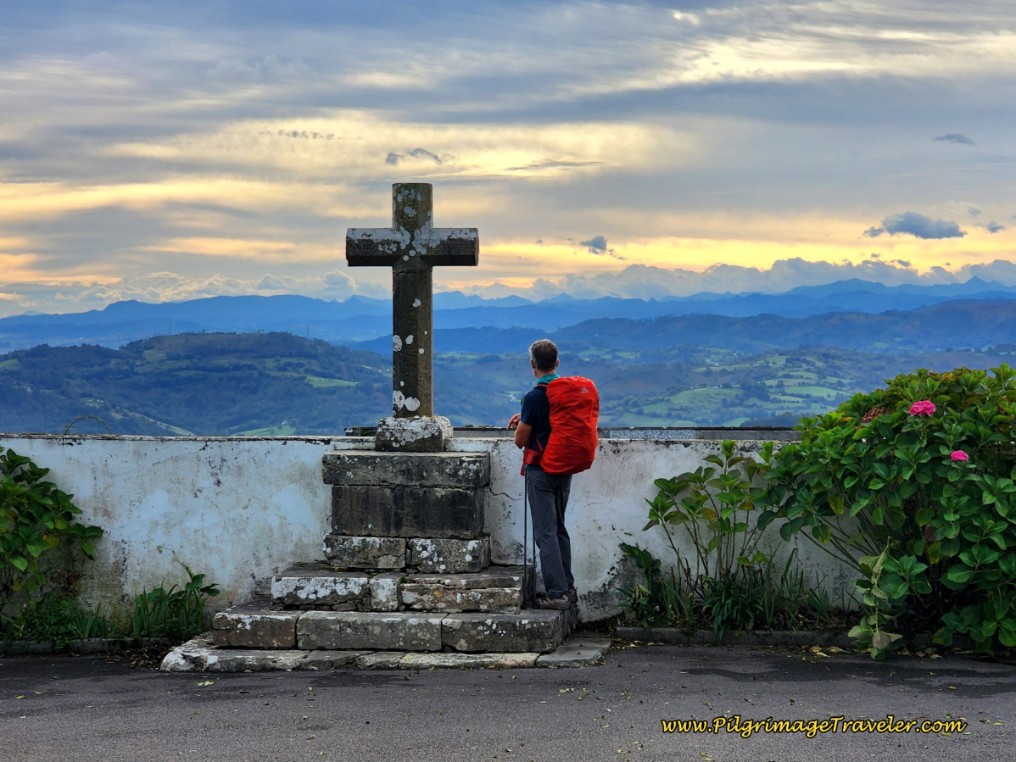
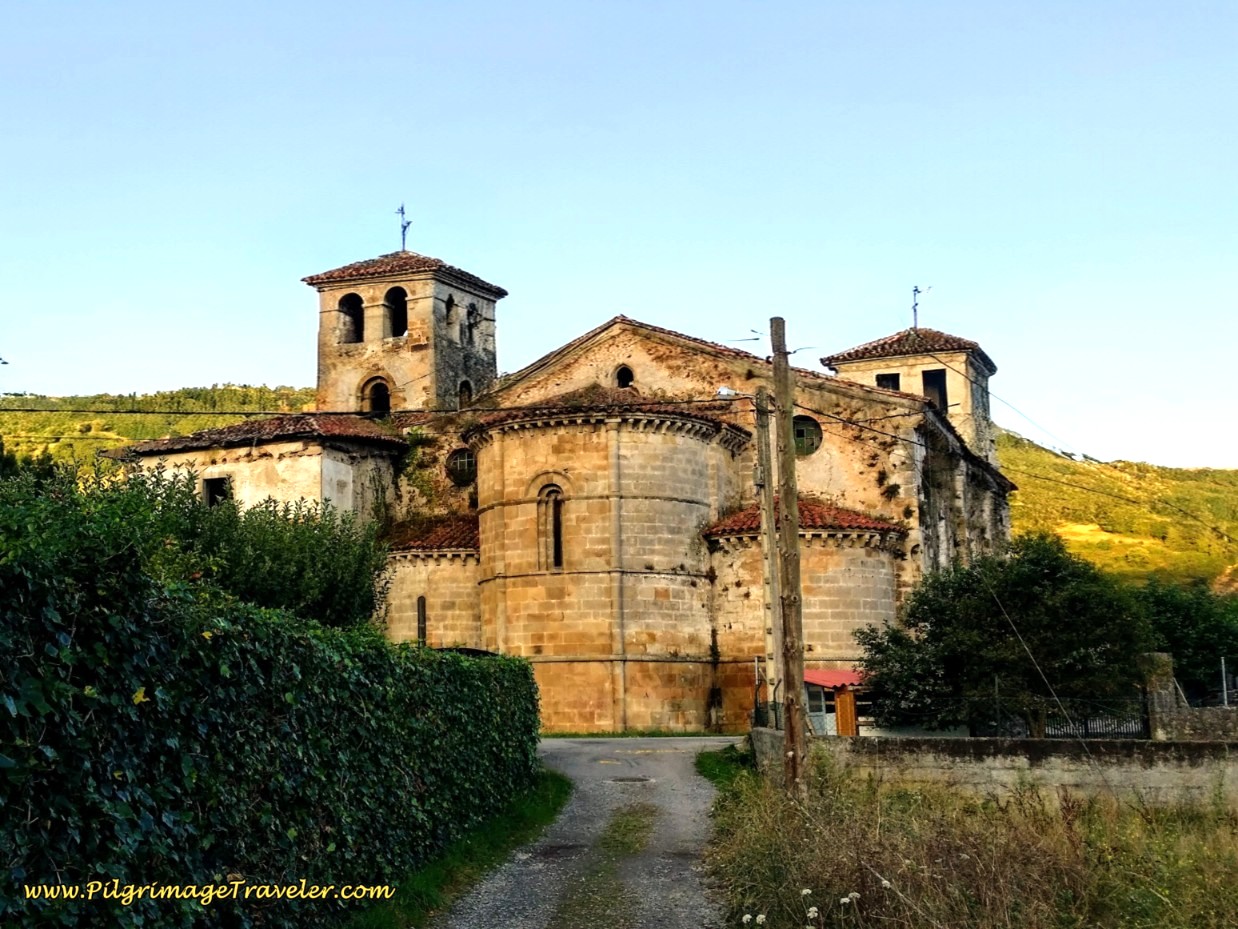
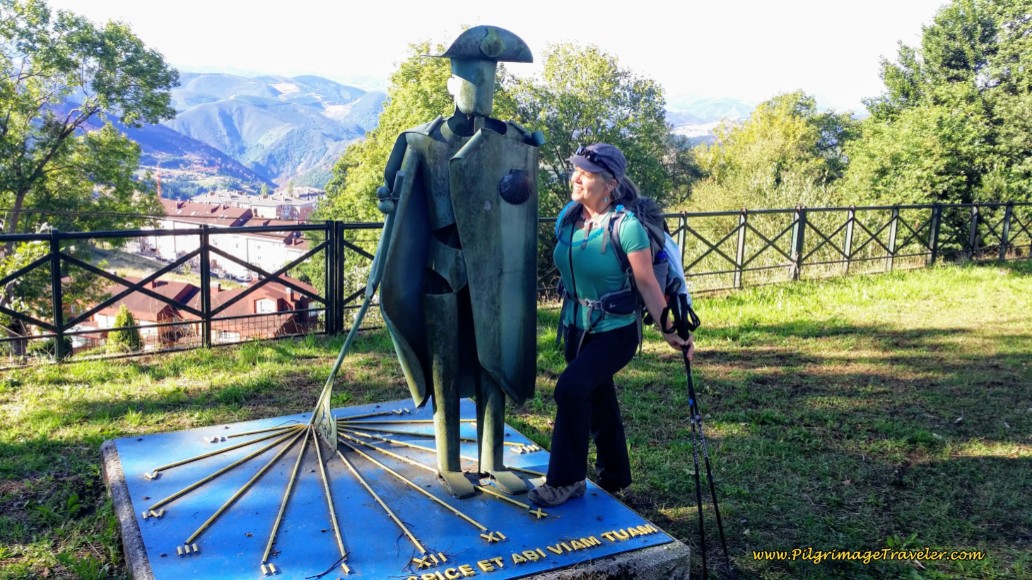
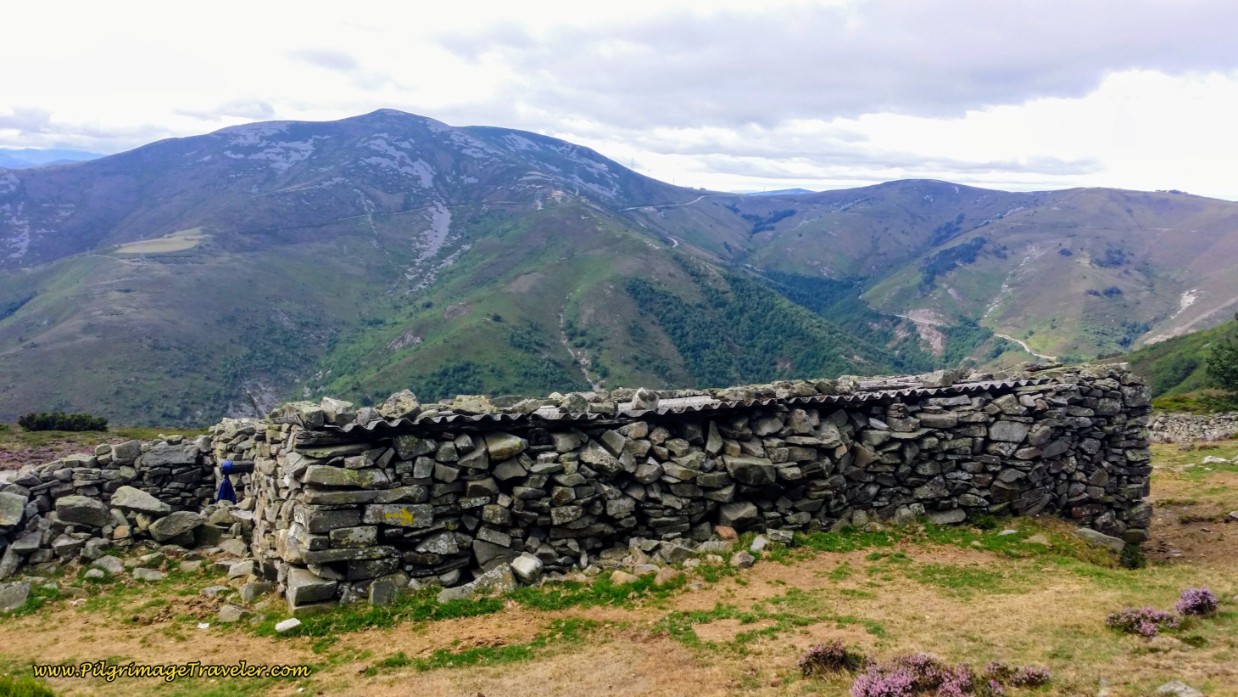
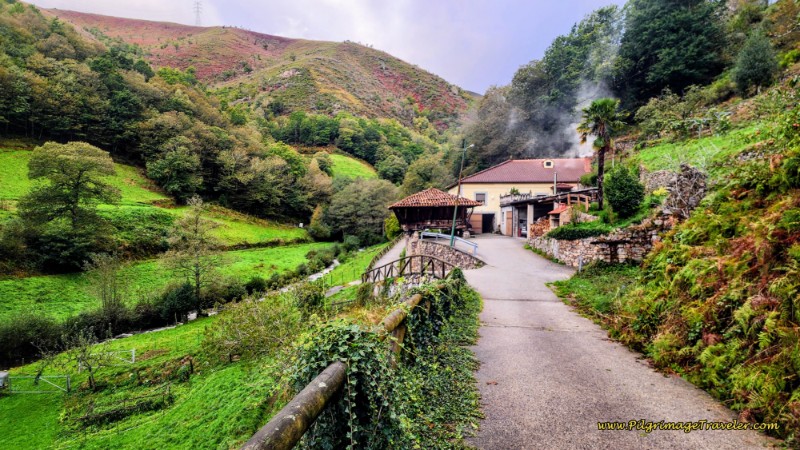
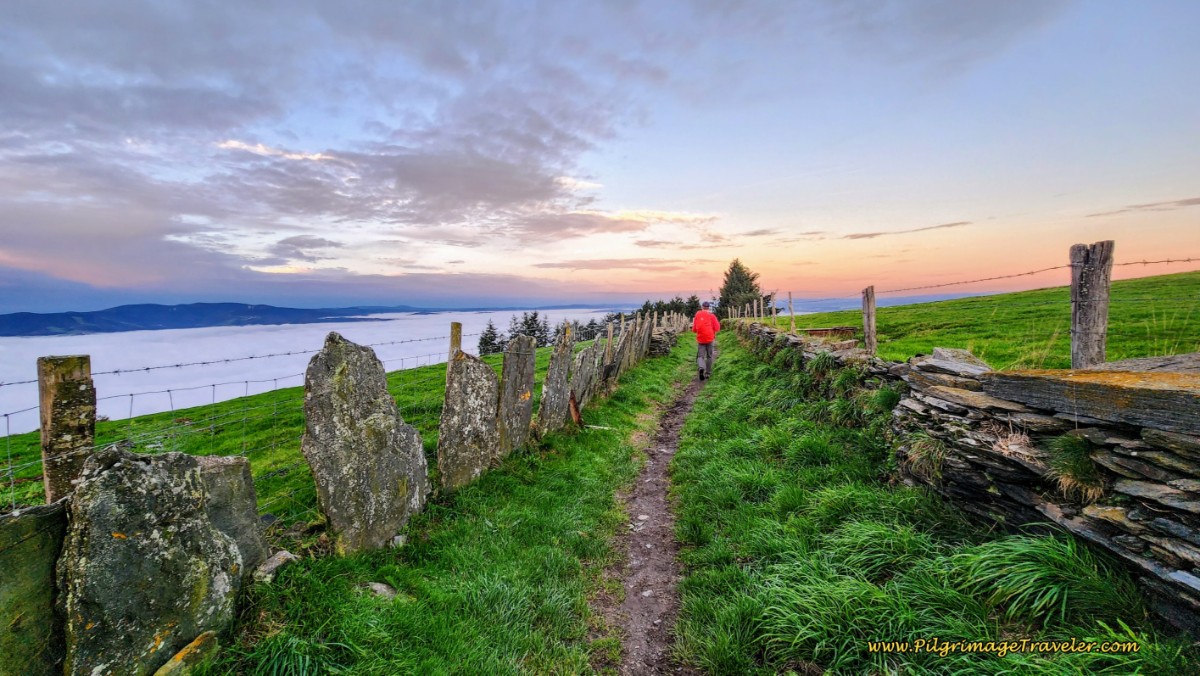
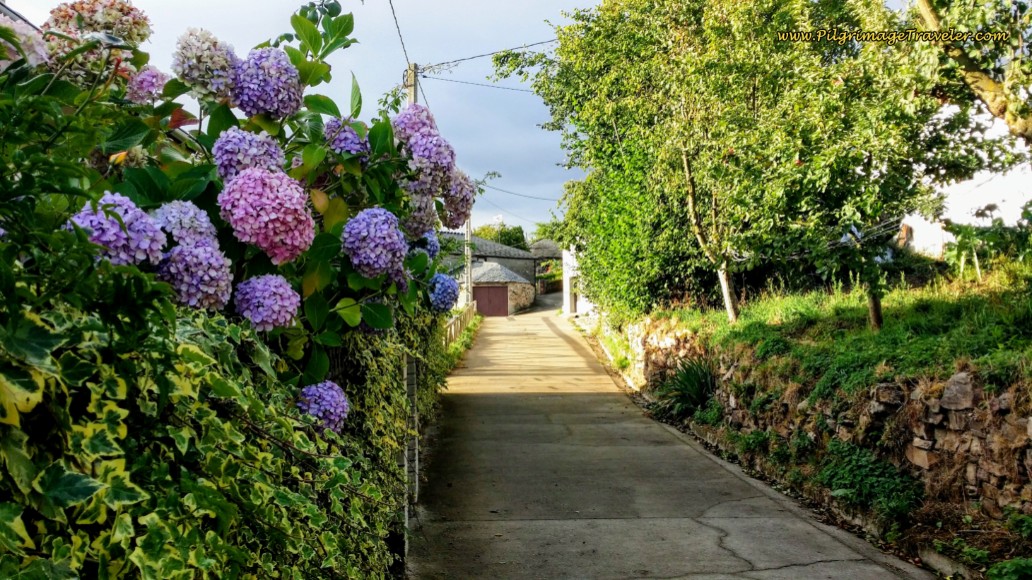
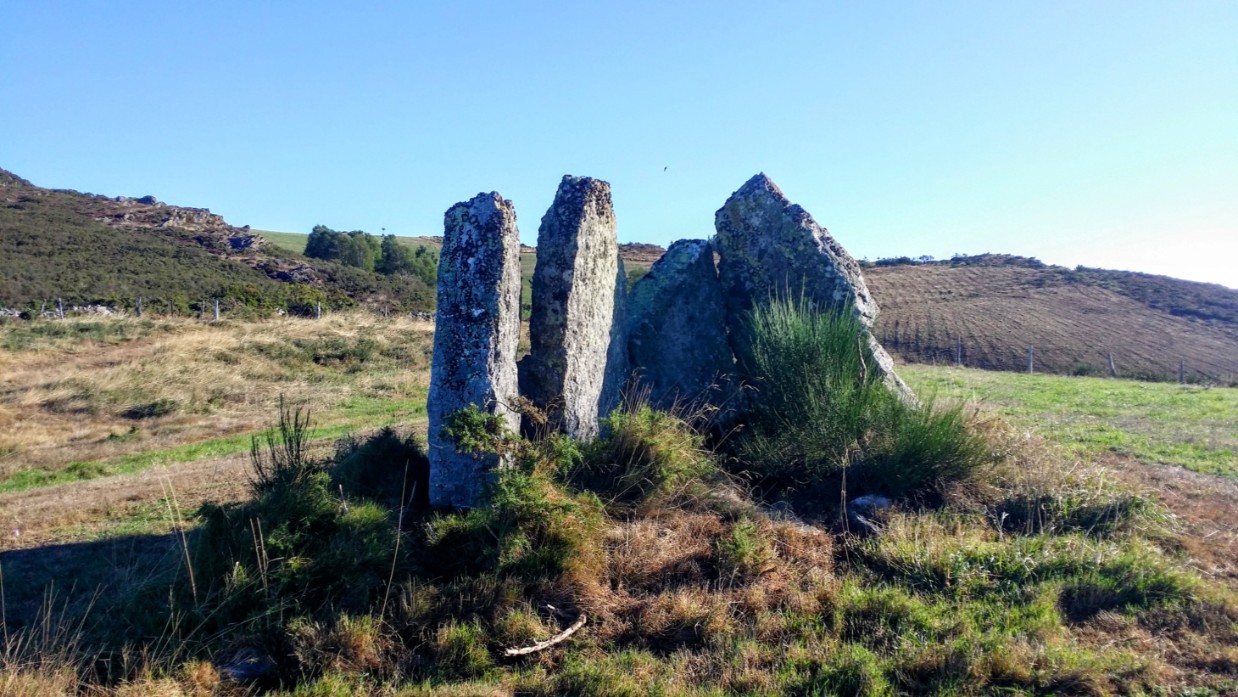
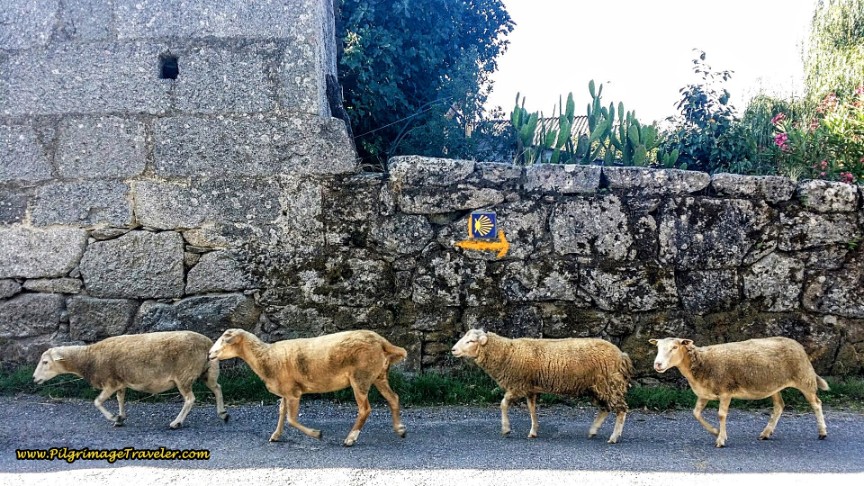
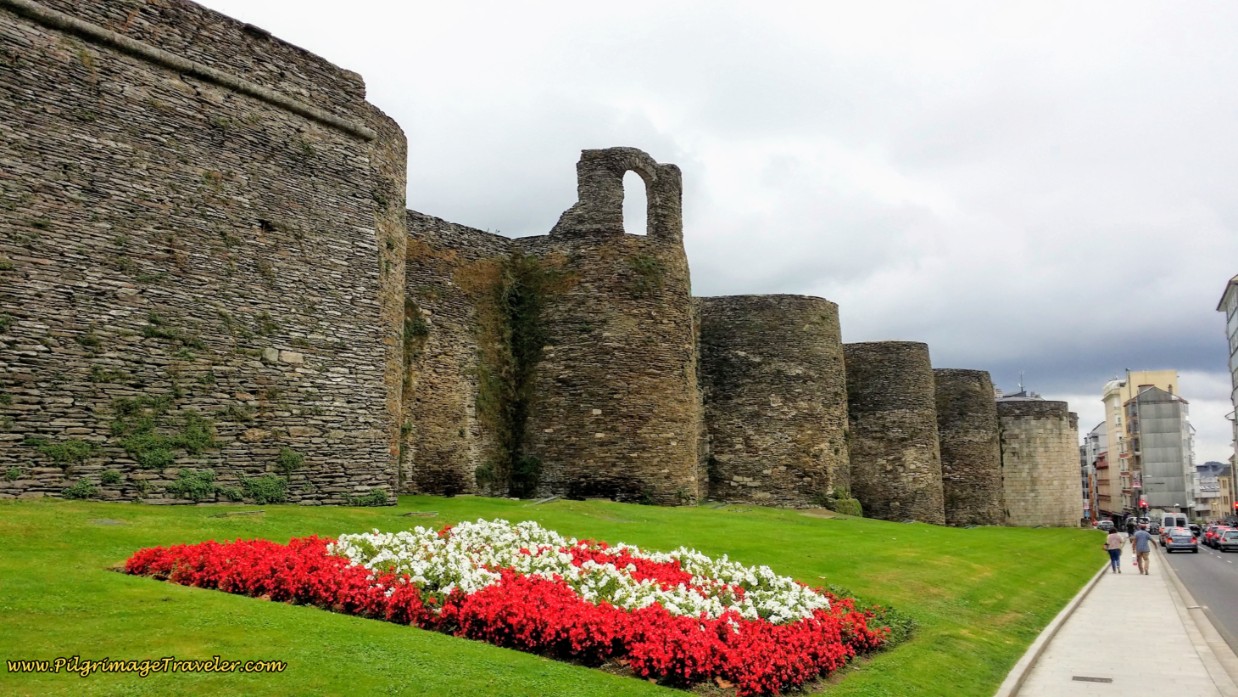
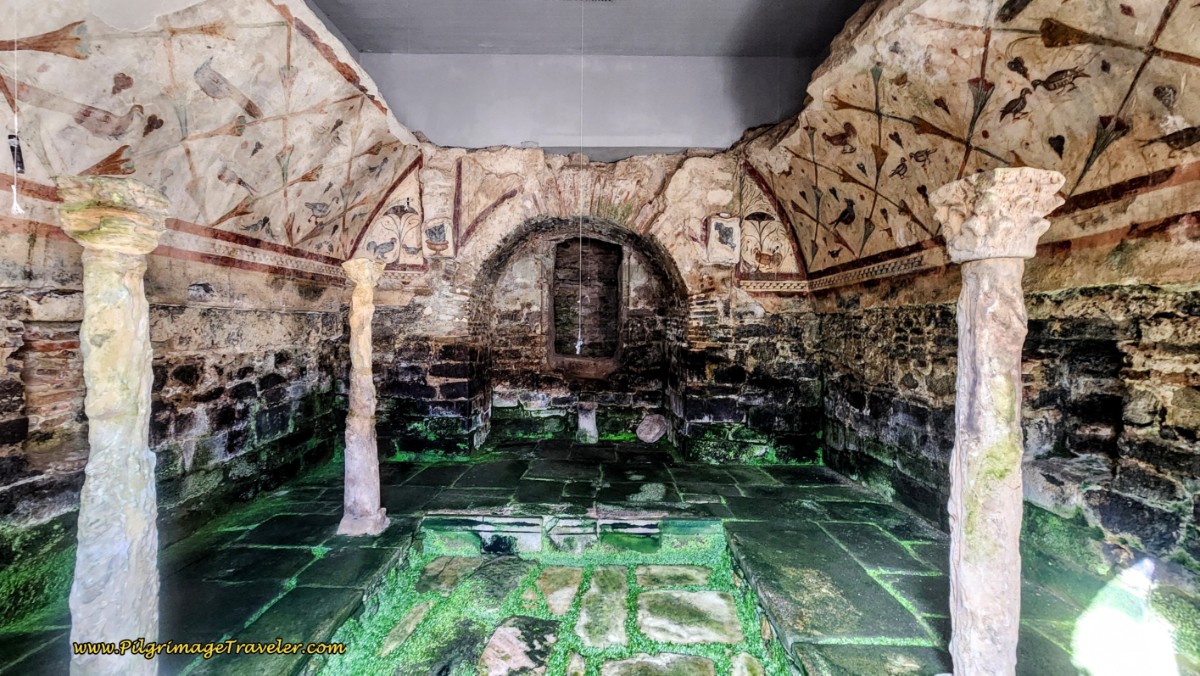
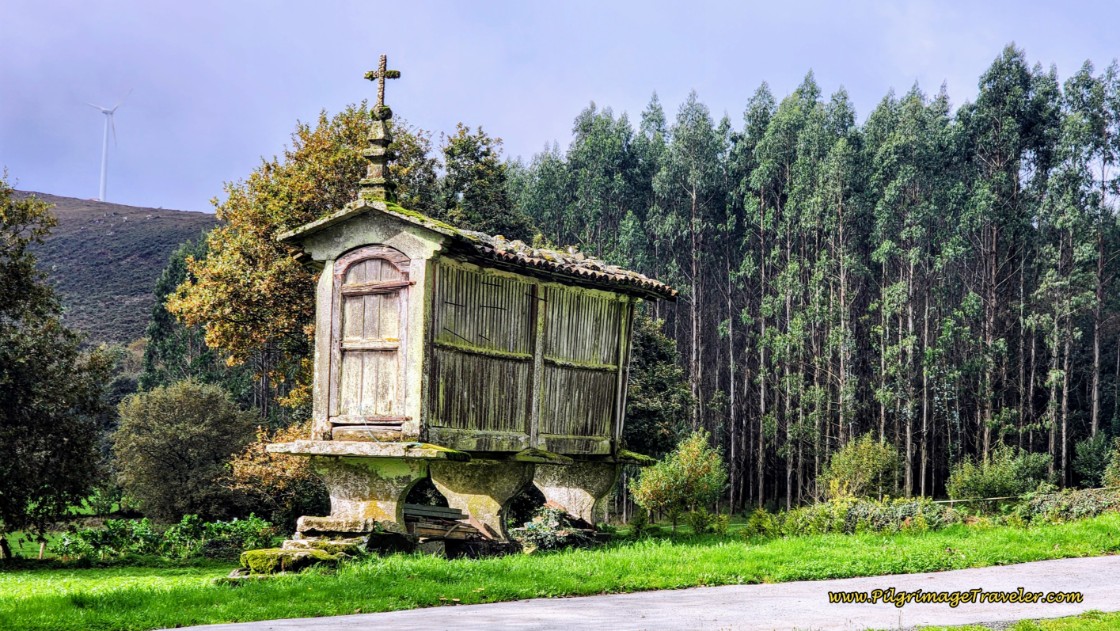
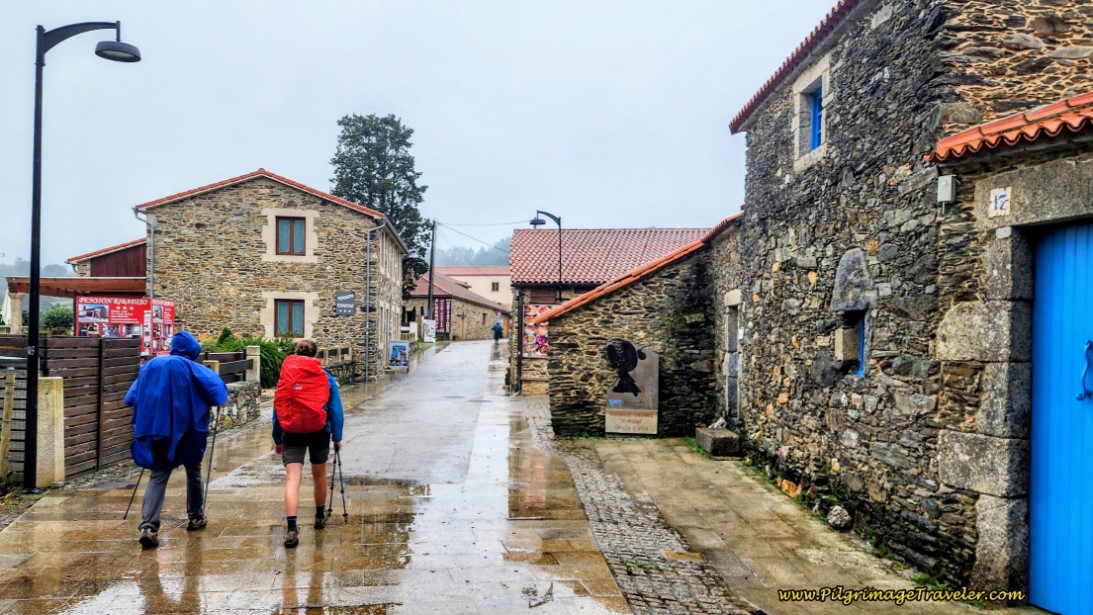
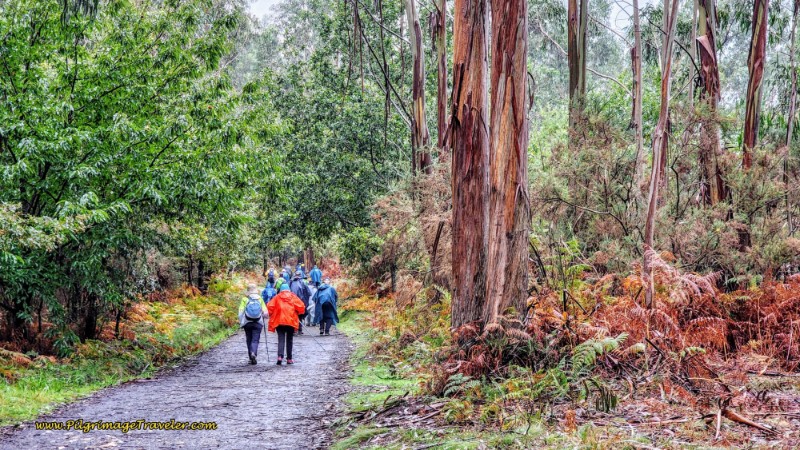
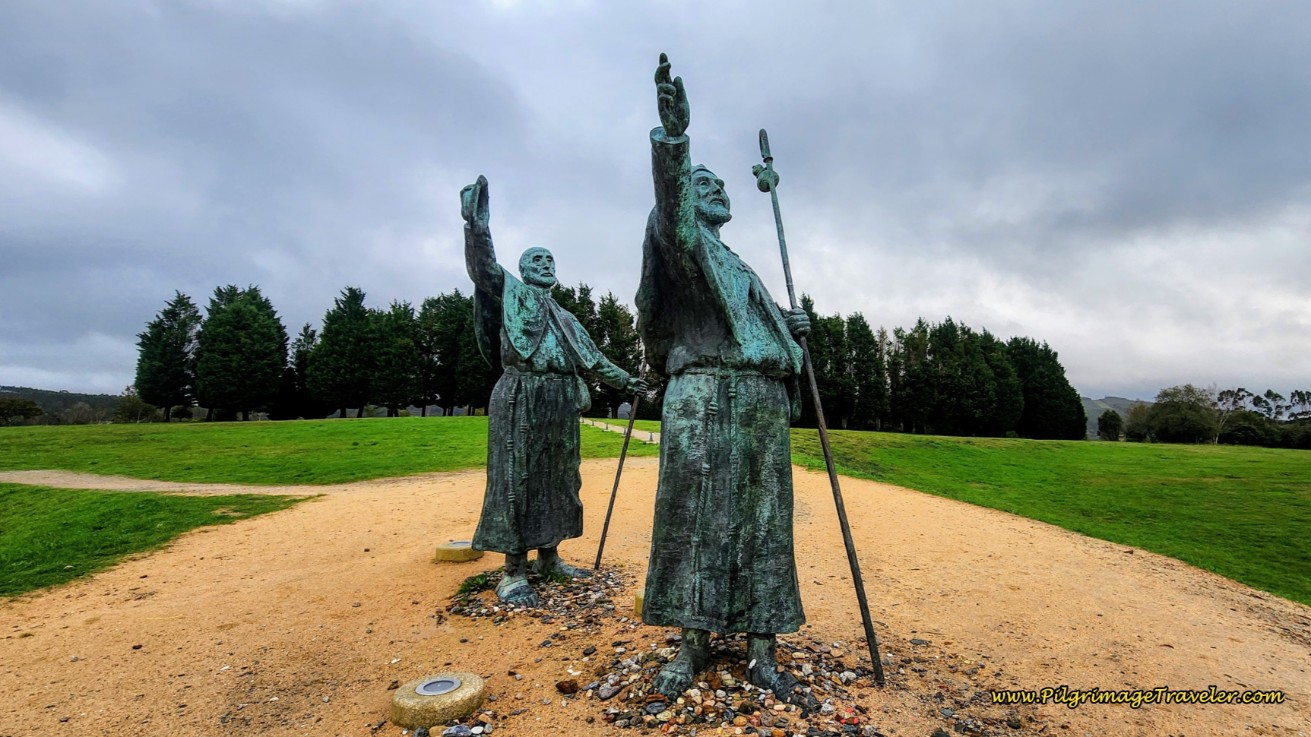
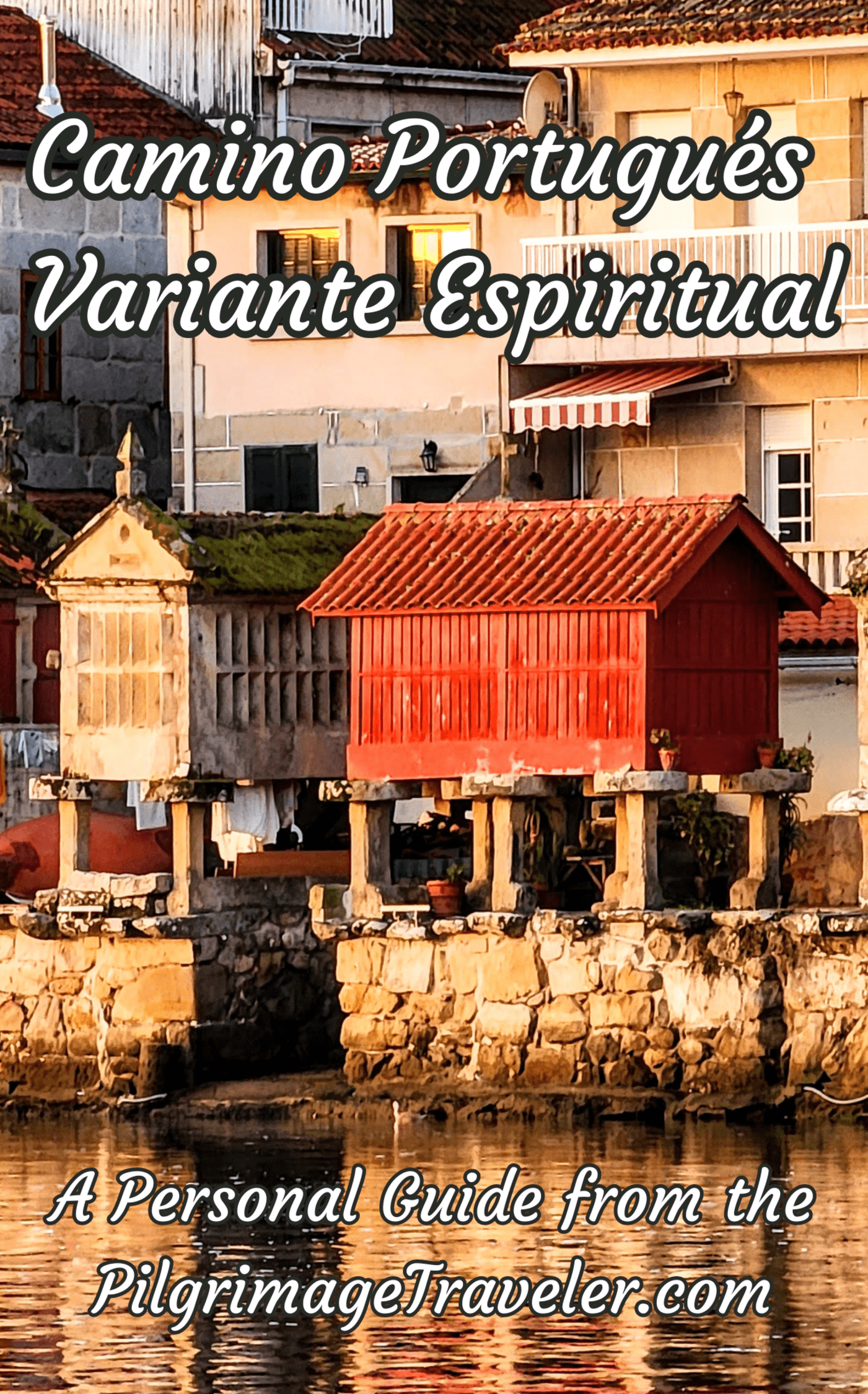
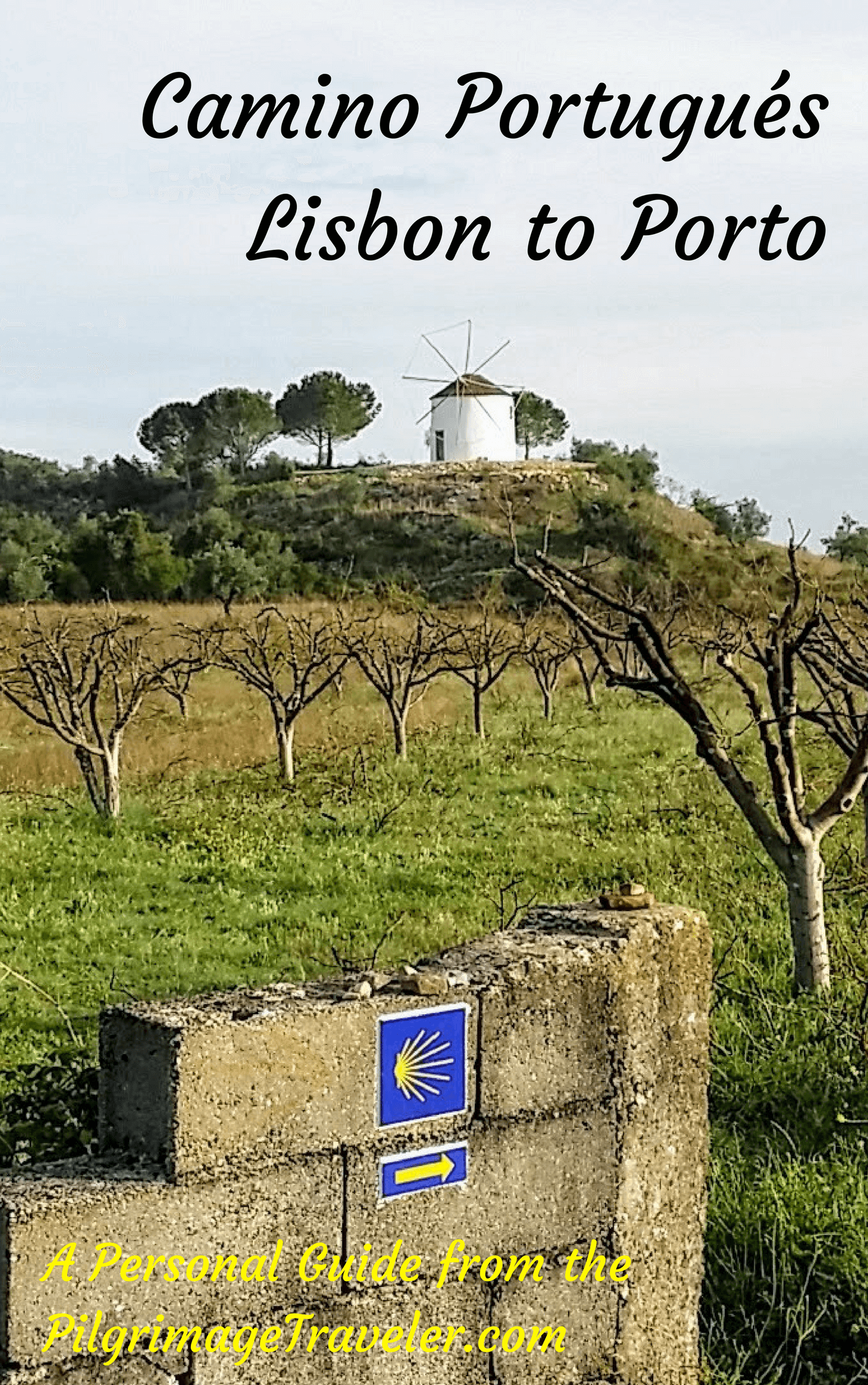
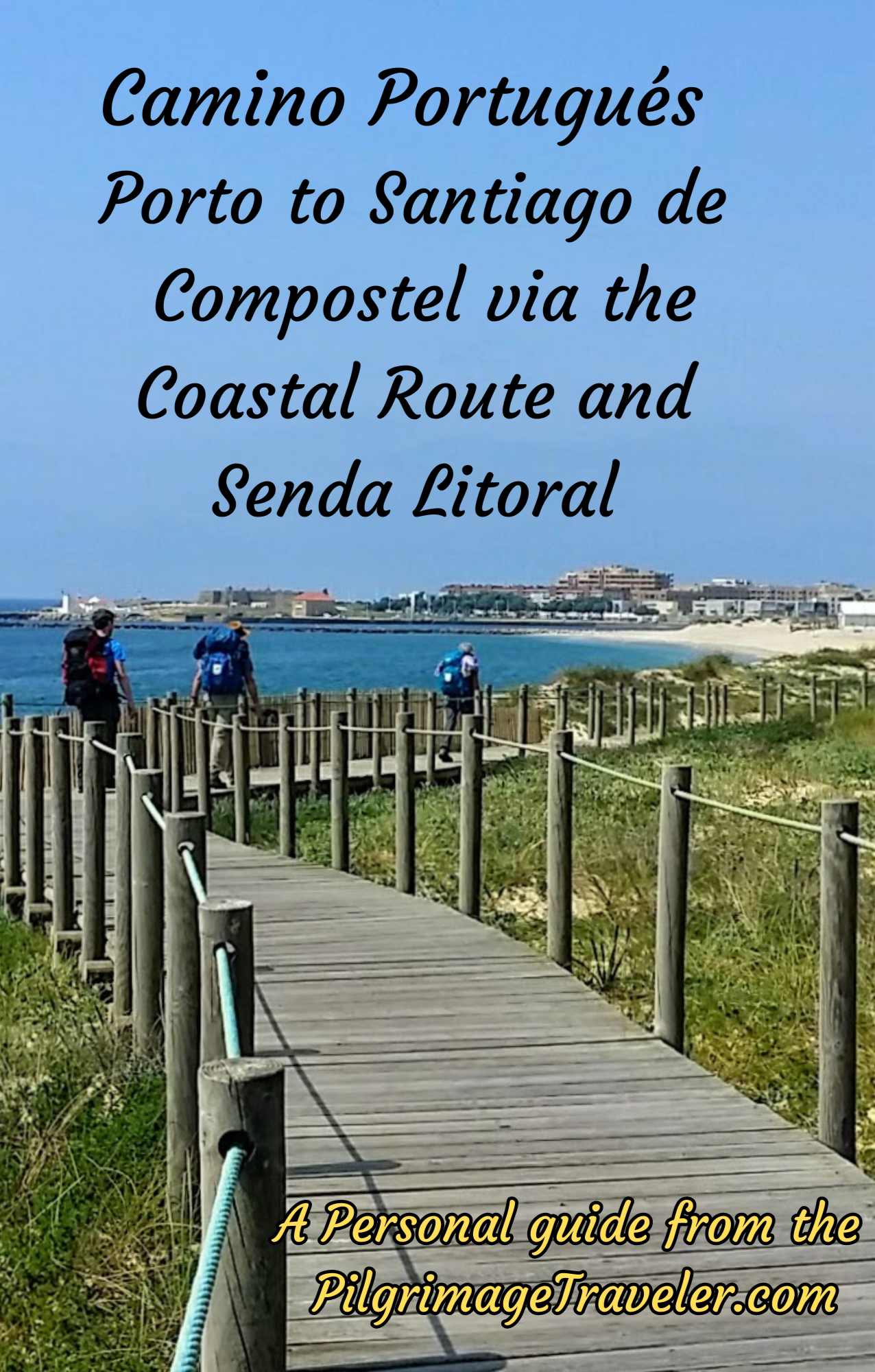
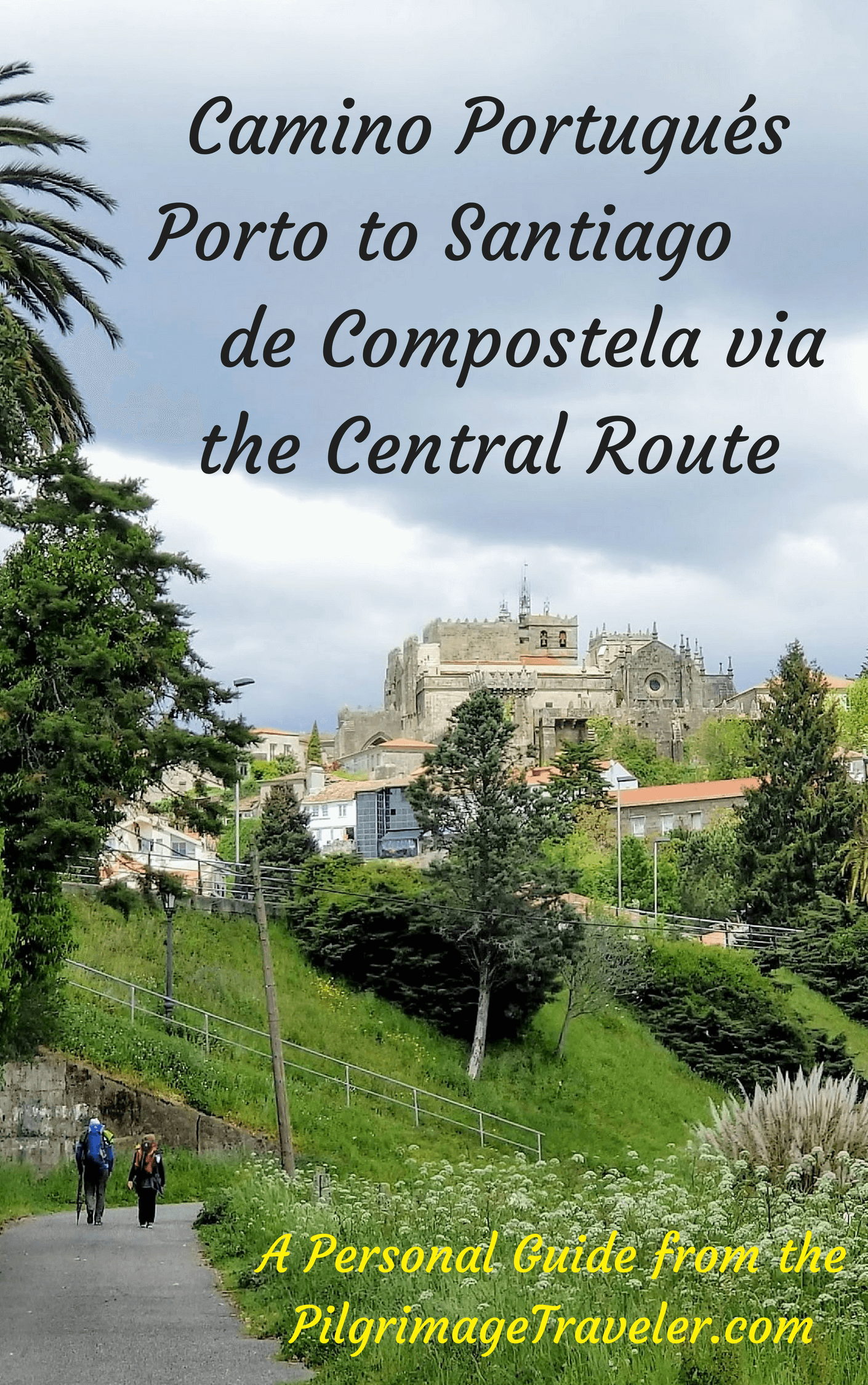
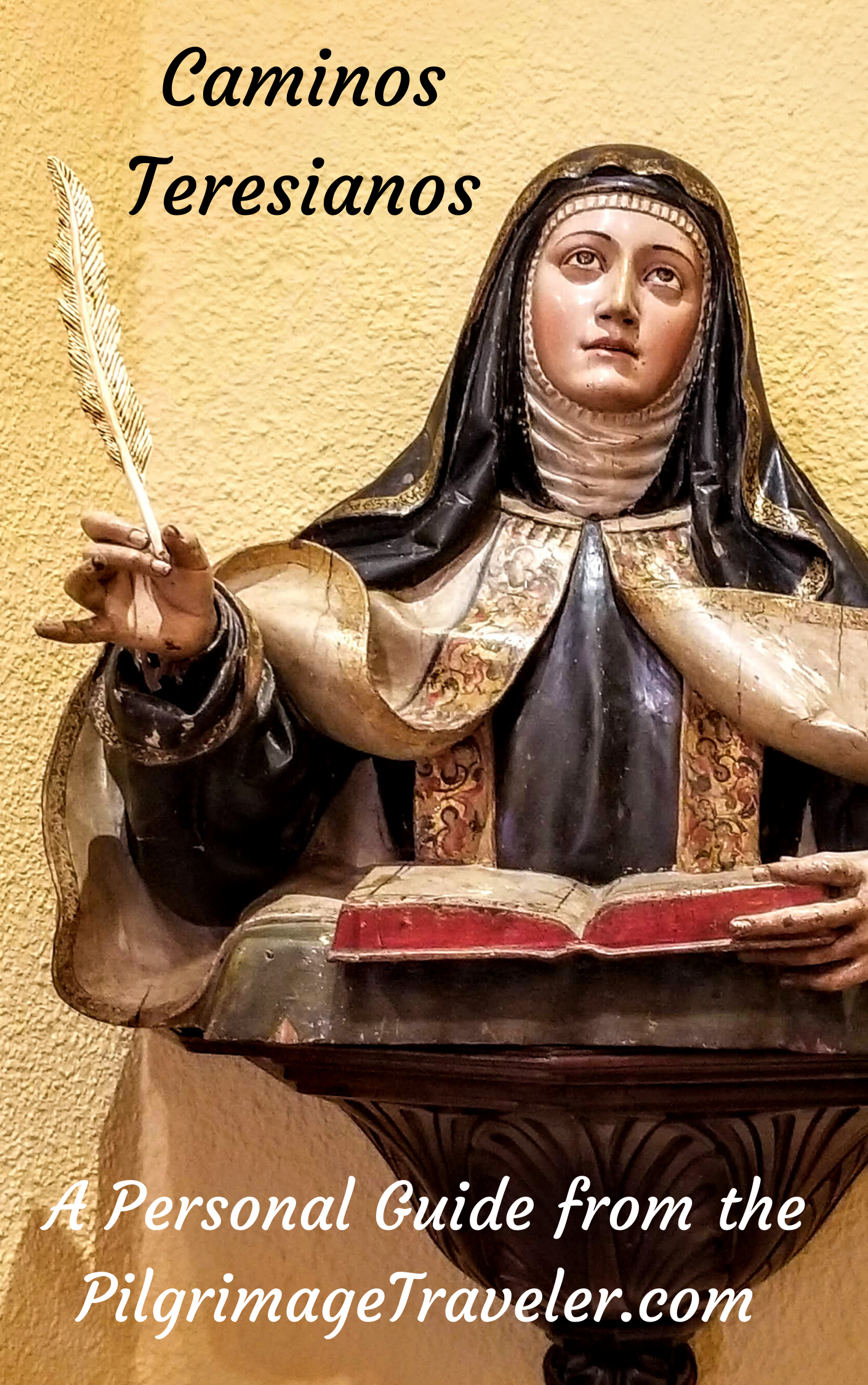
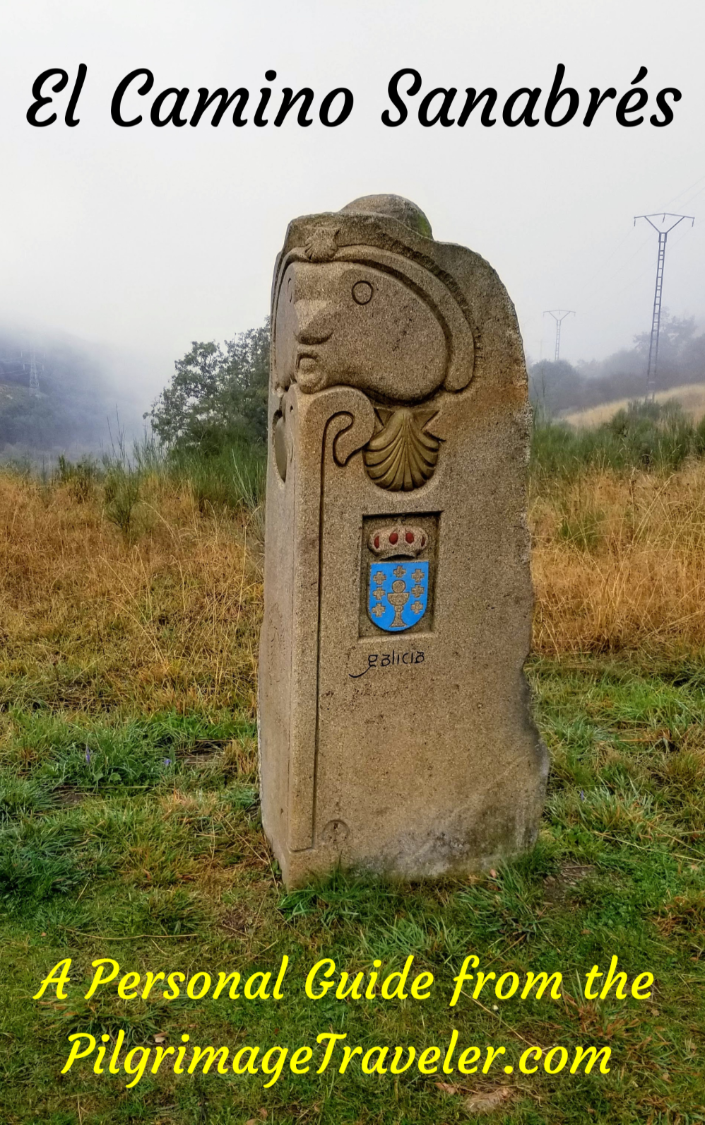
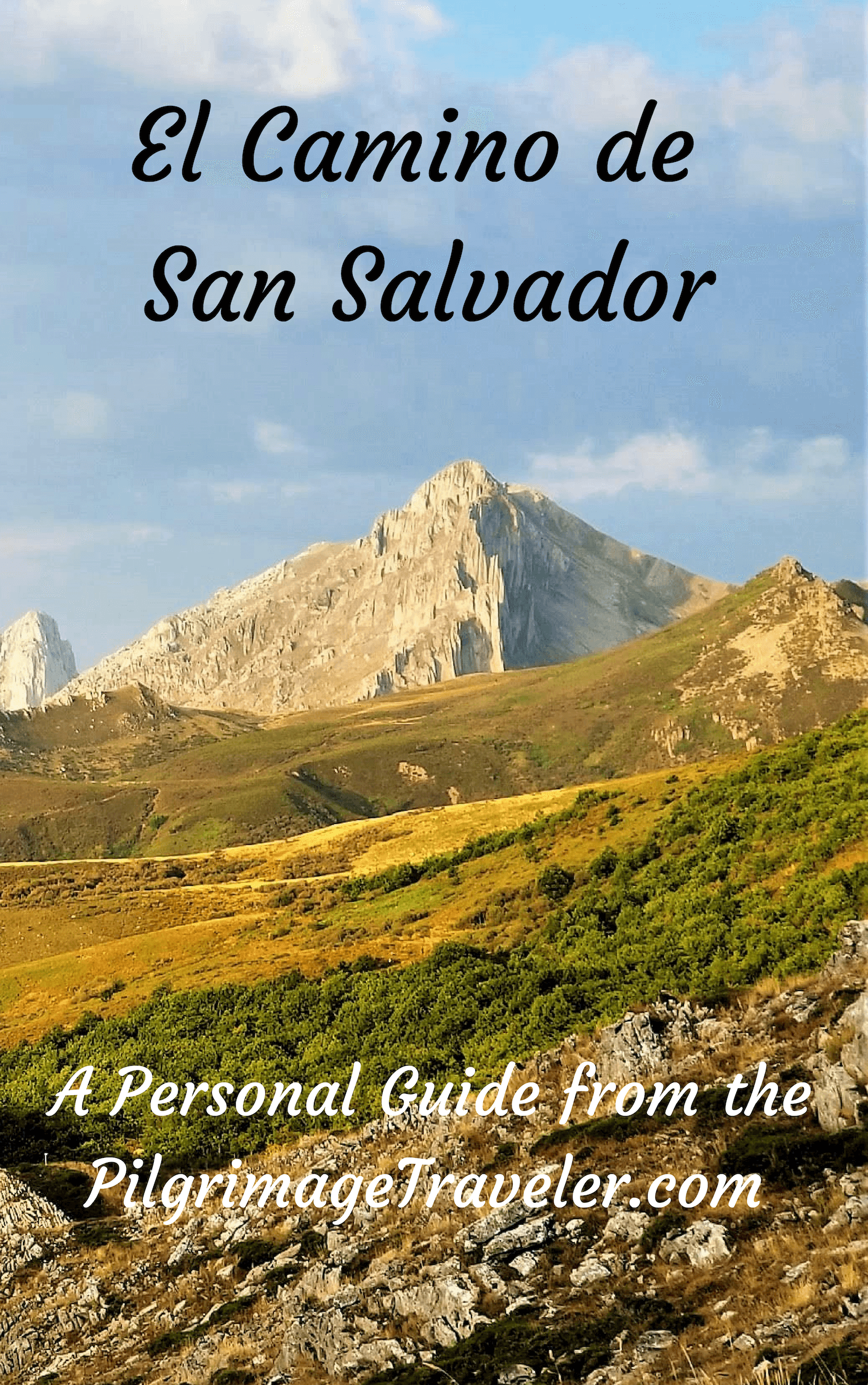
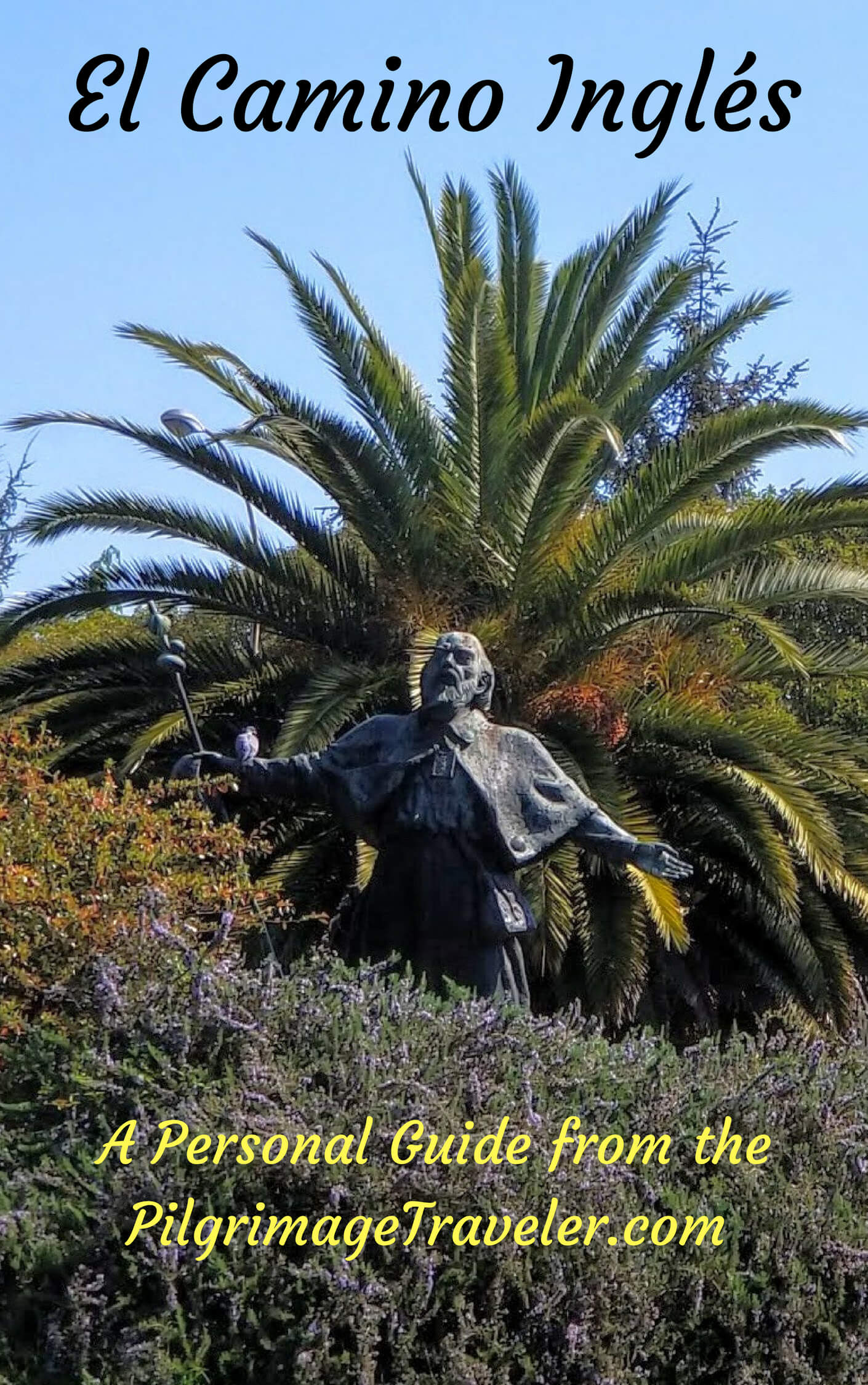
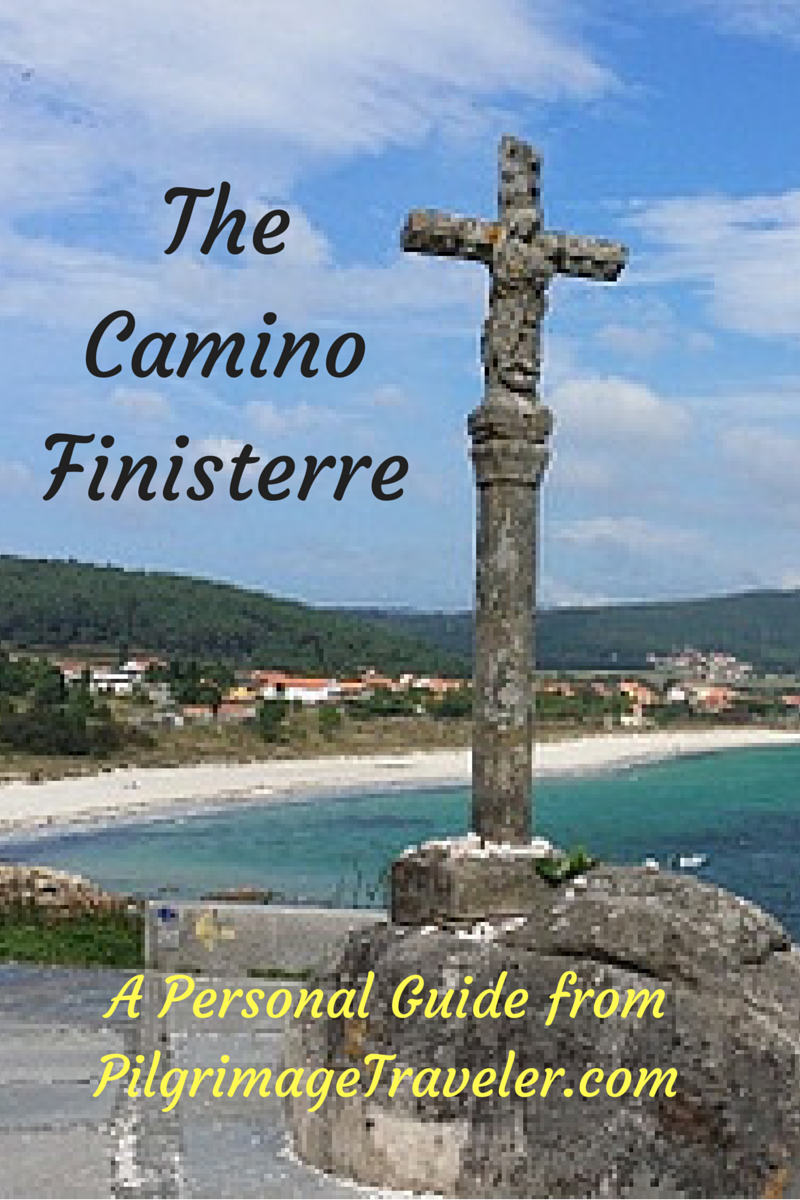
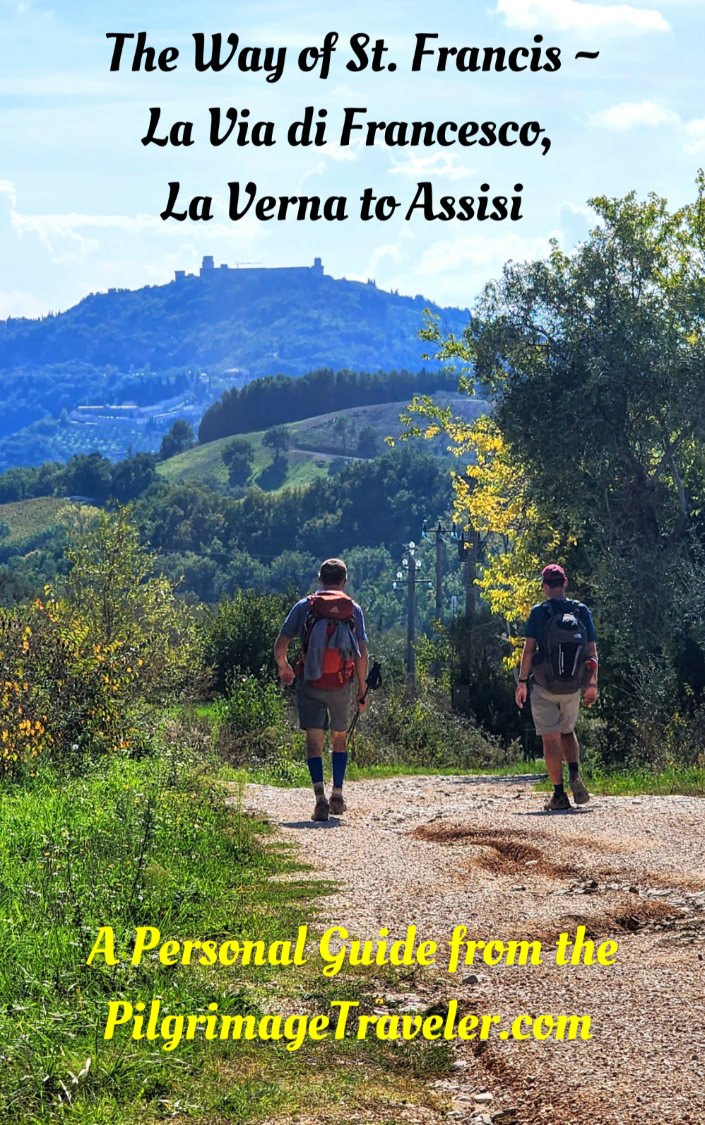

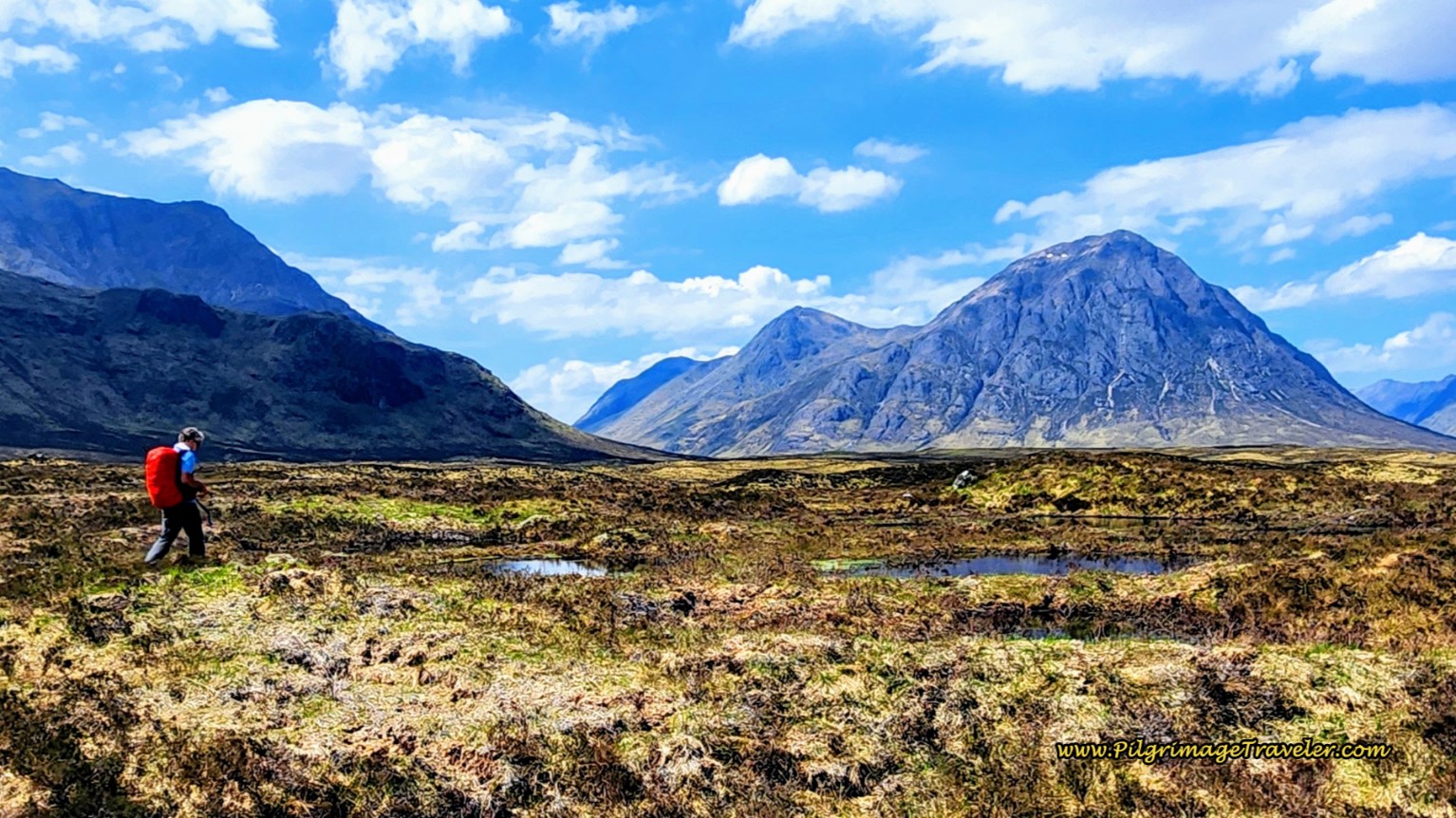
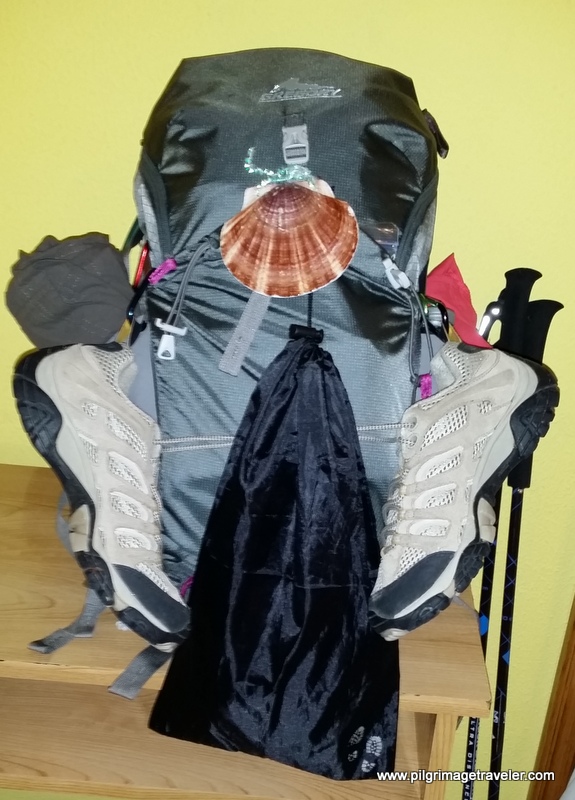



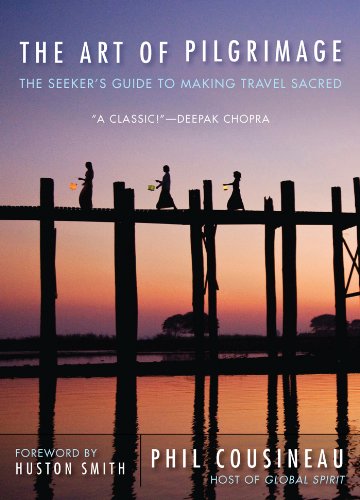


Your Opinion Matters! Comments
Have you had a similar experience, have some advice to give, or have something else you'd like to share? We would love to hear from you! Please leave us a comment in the box below.